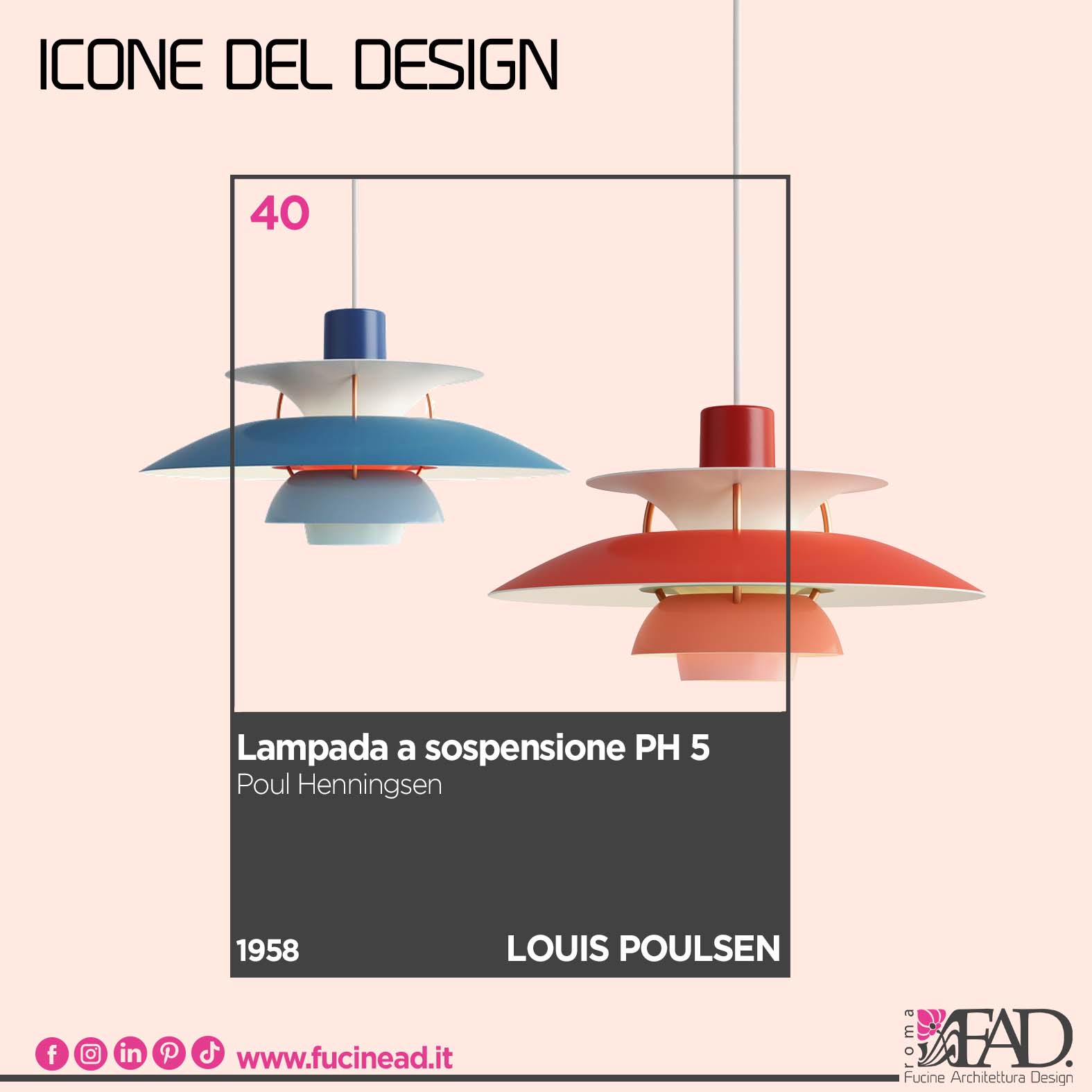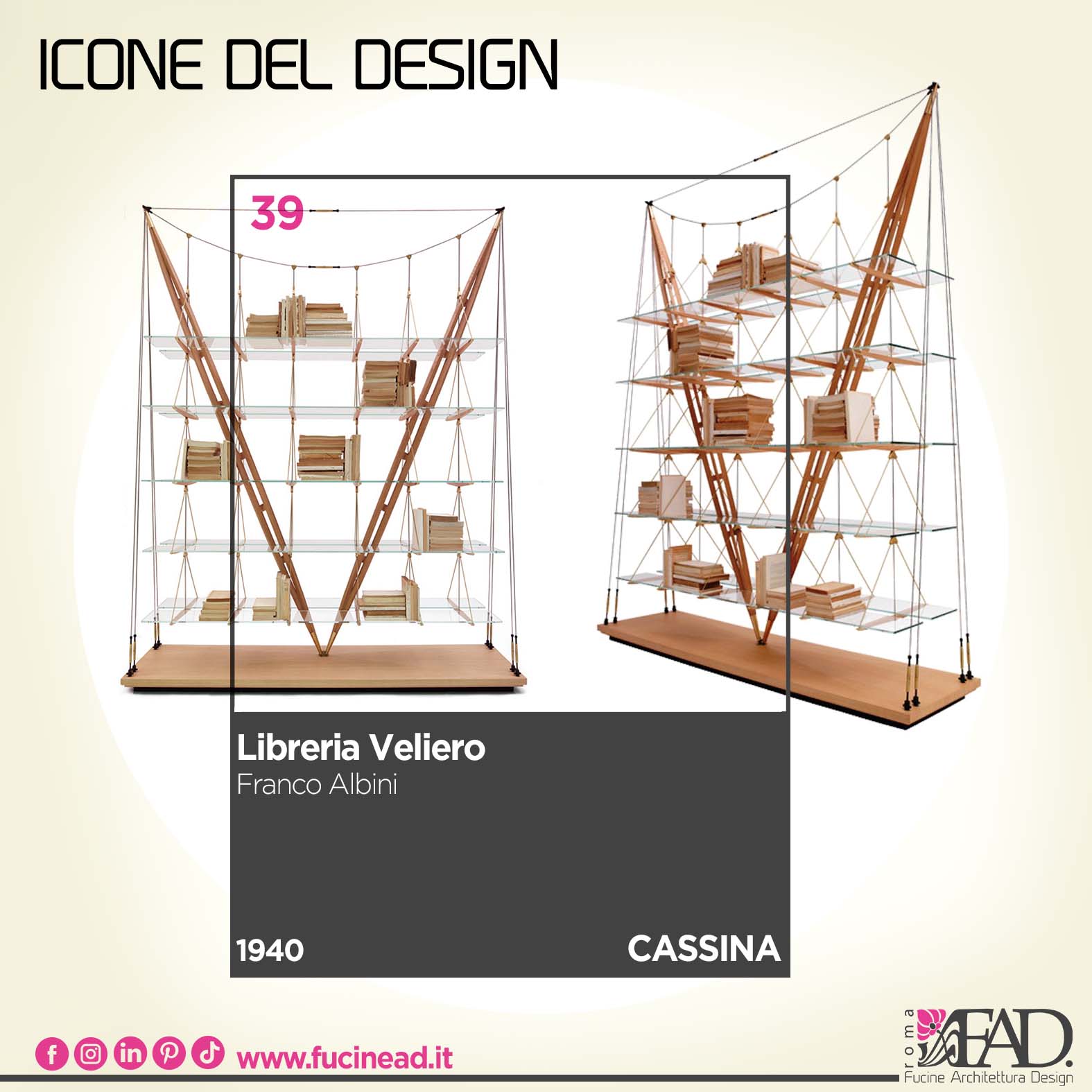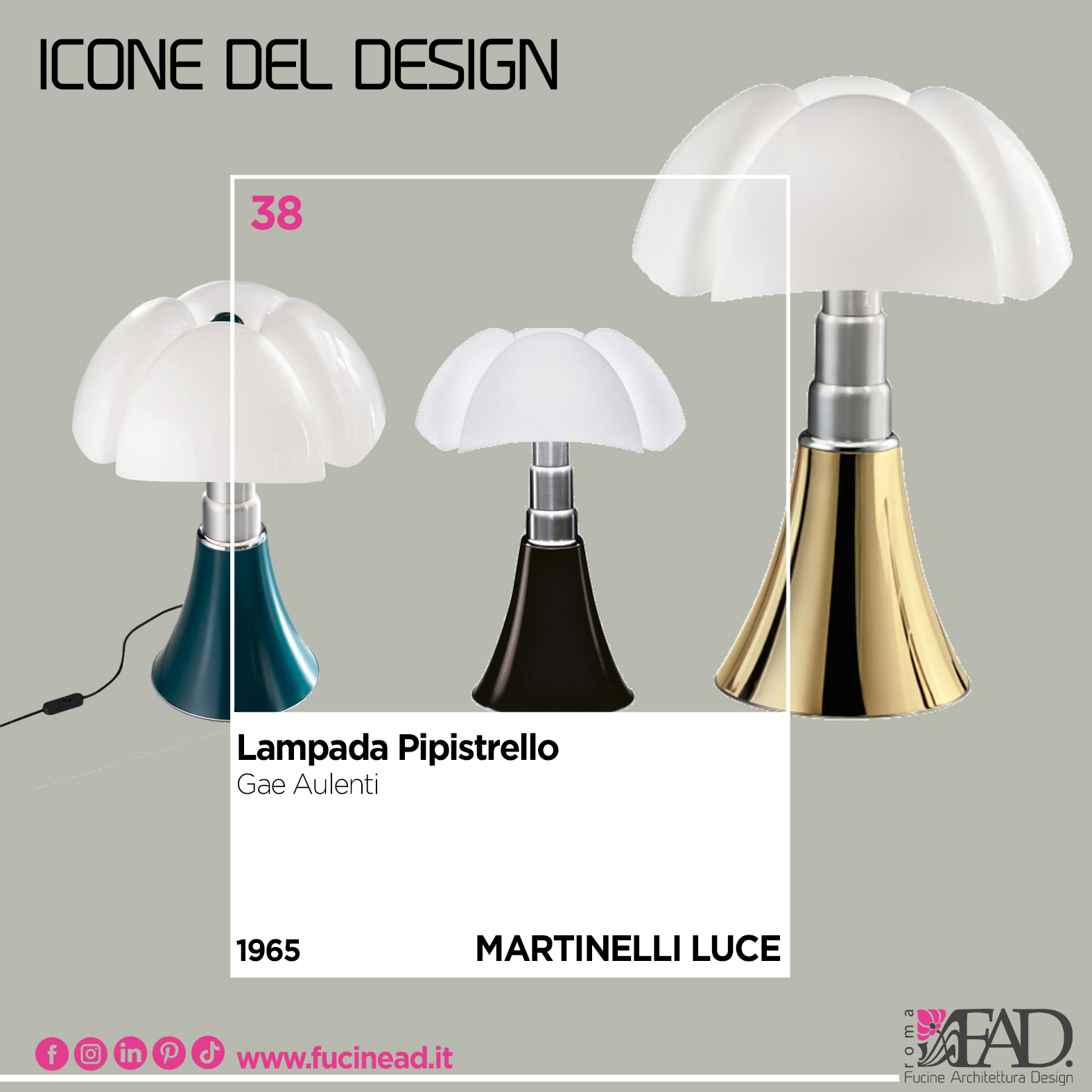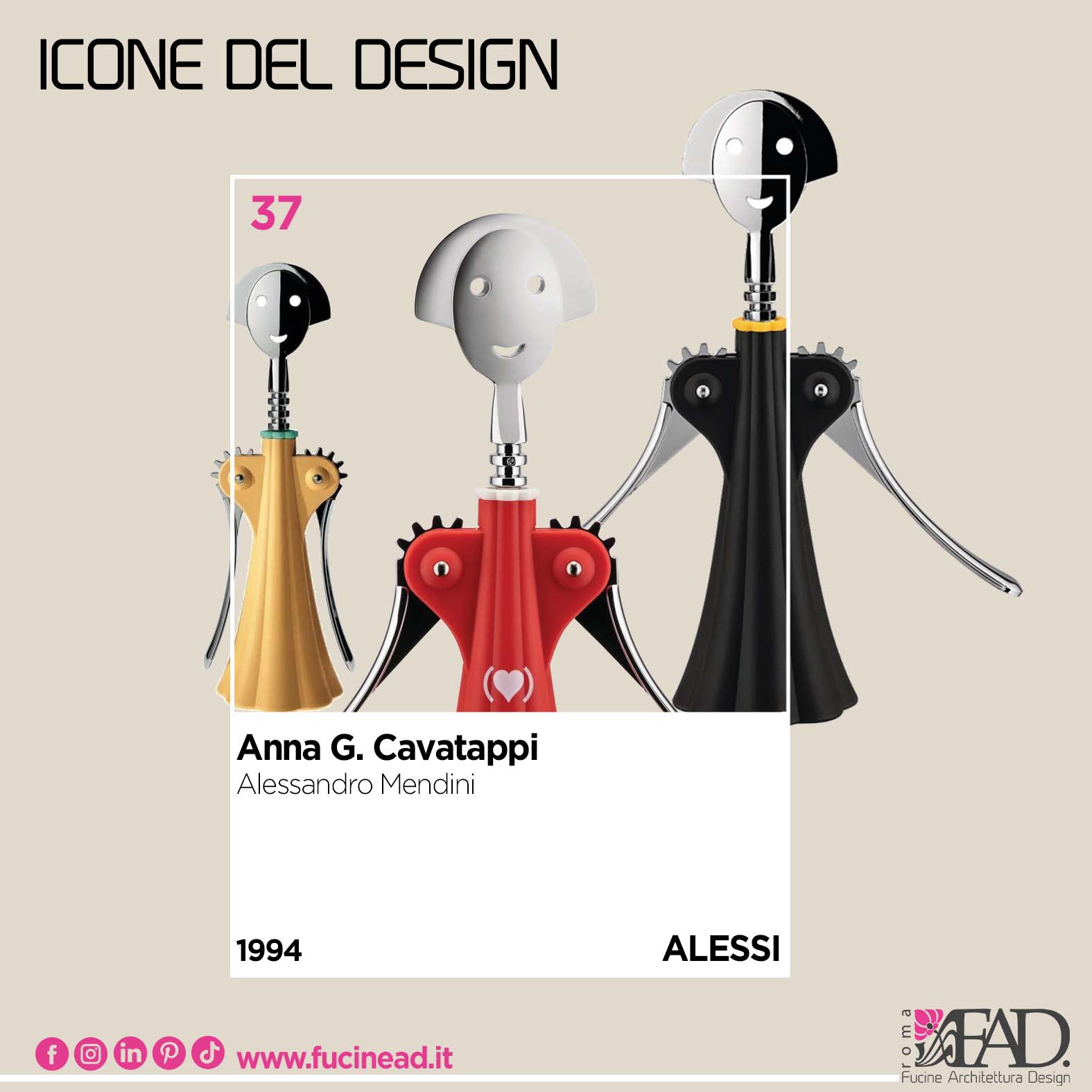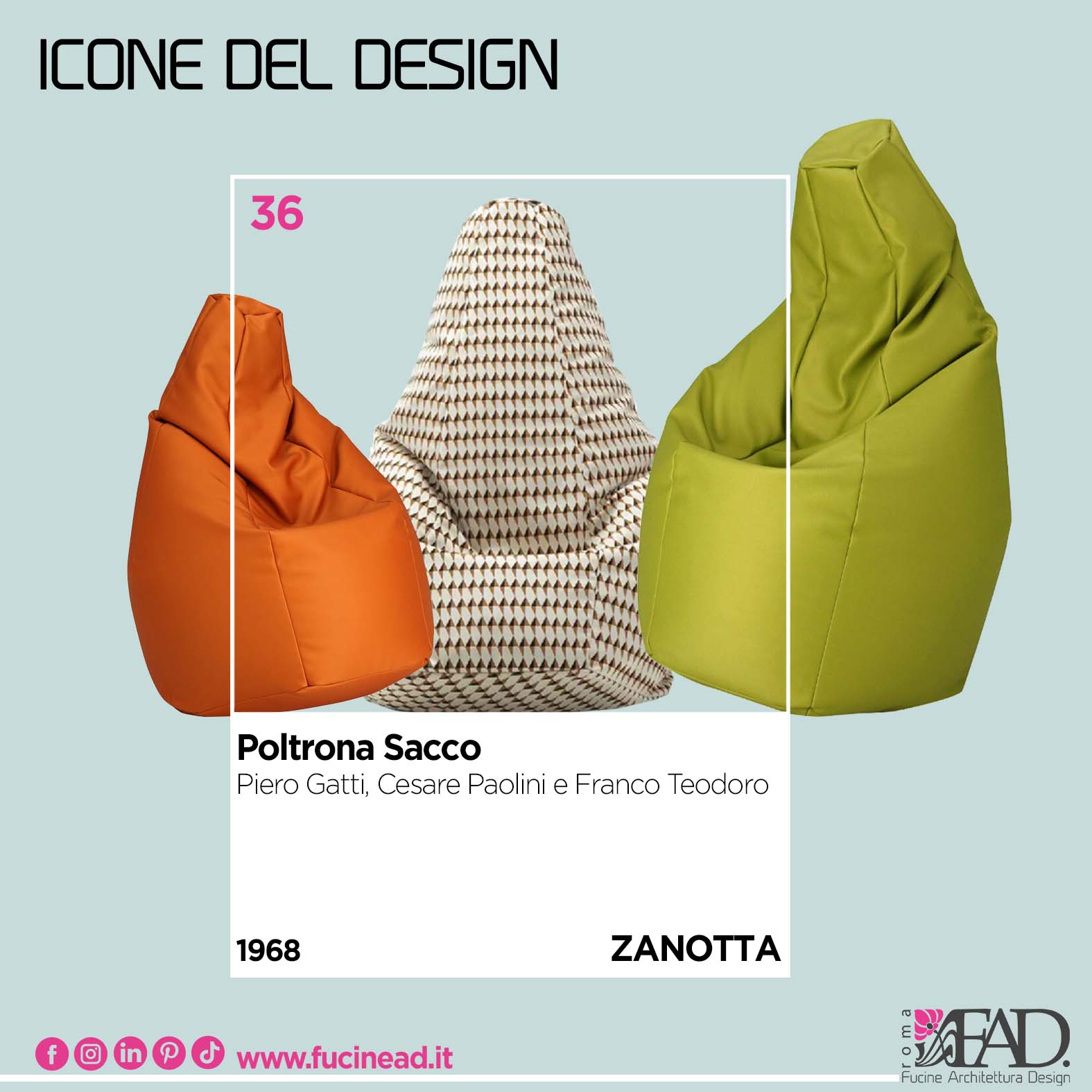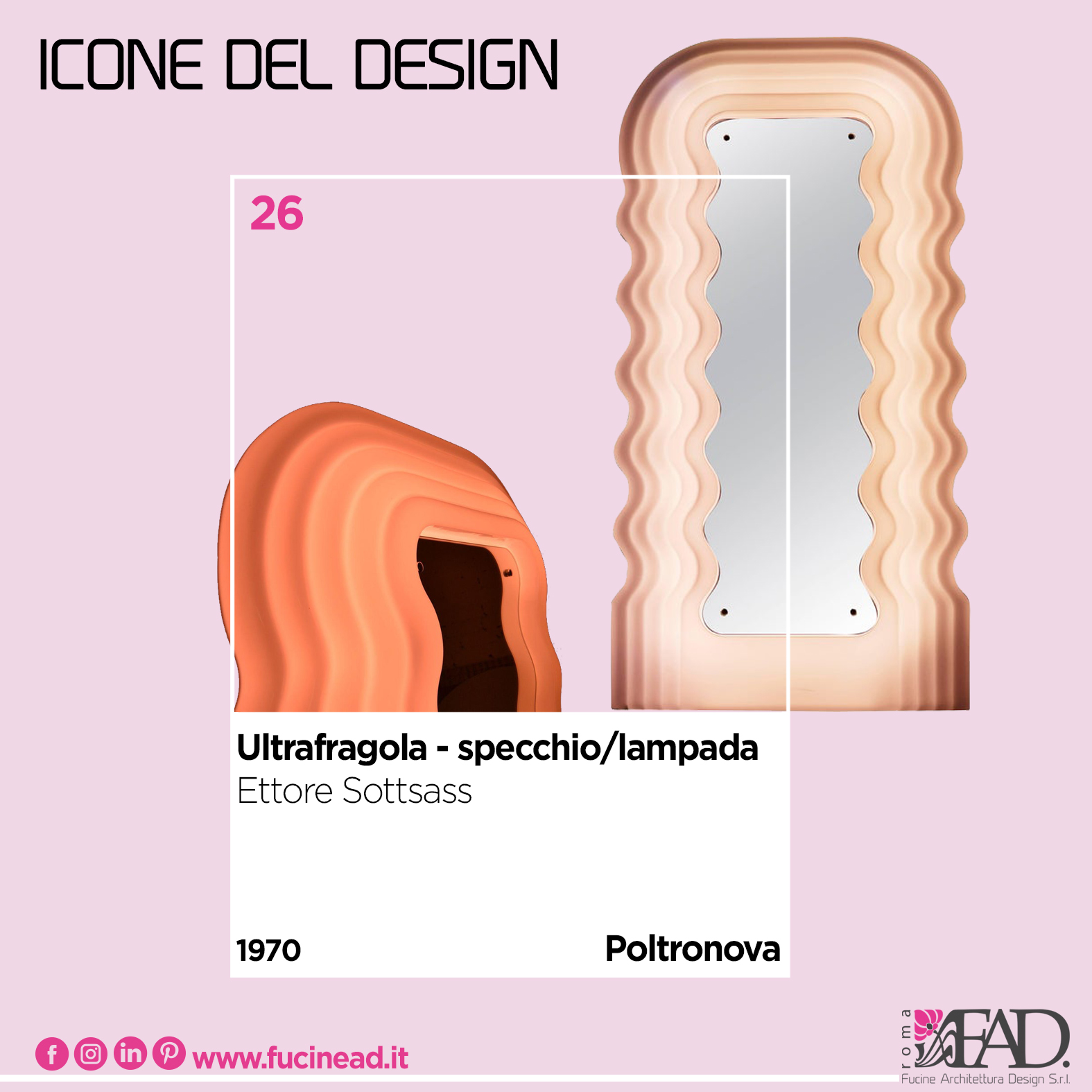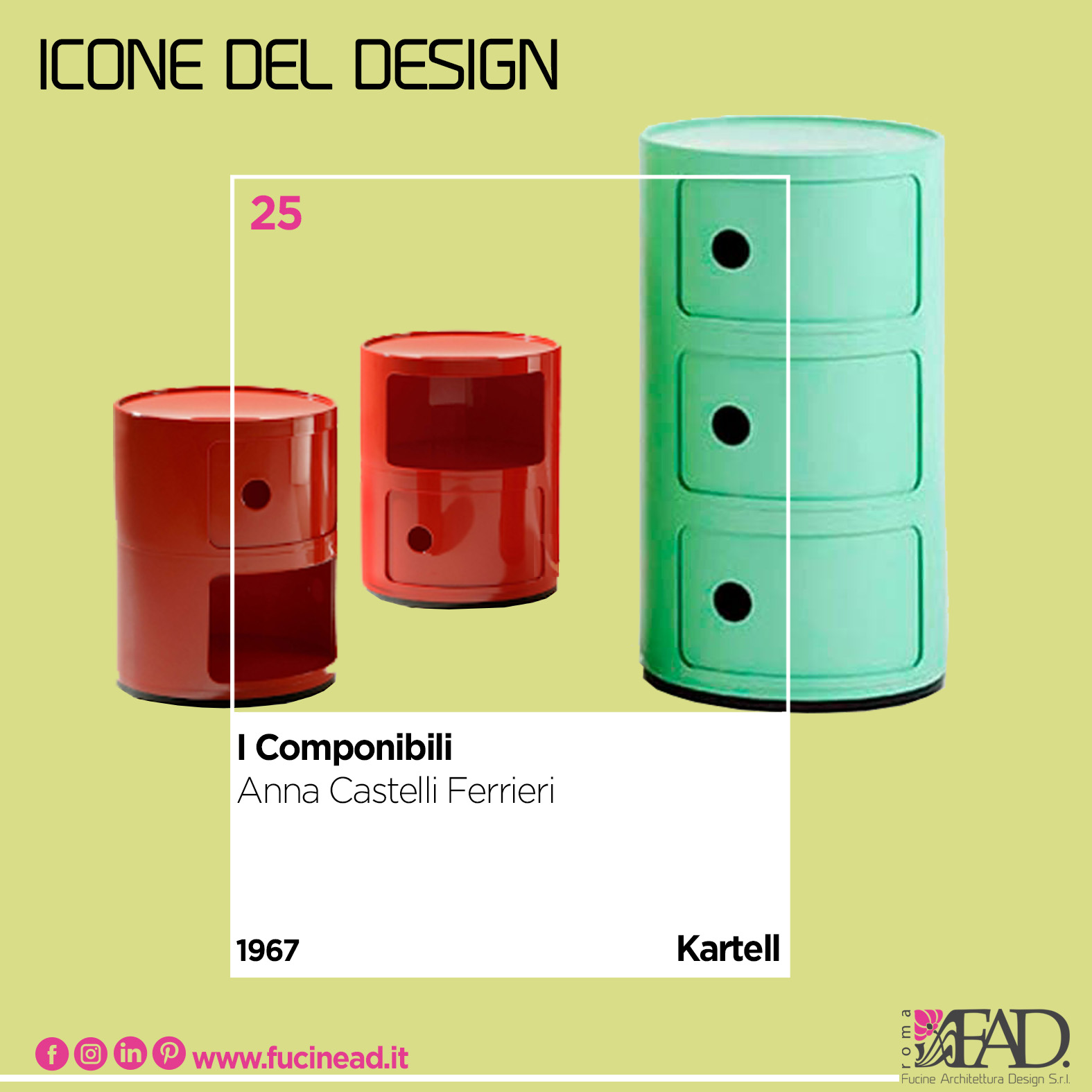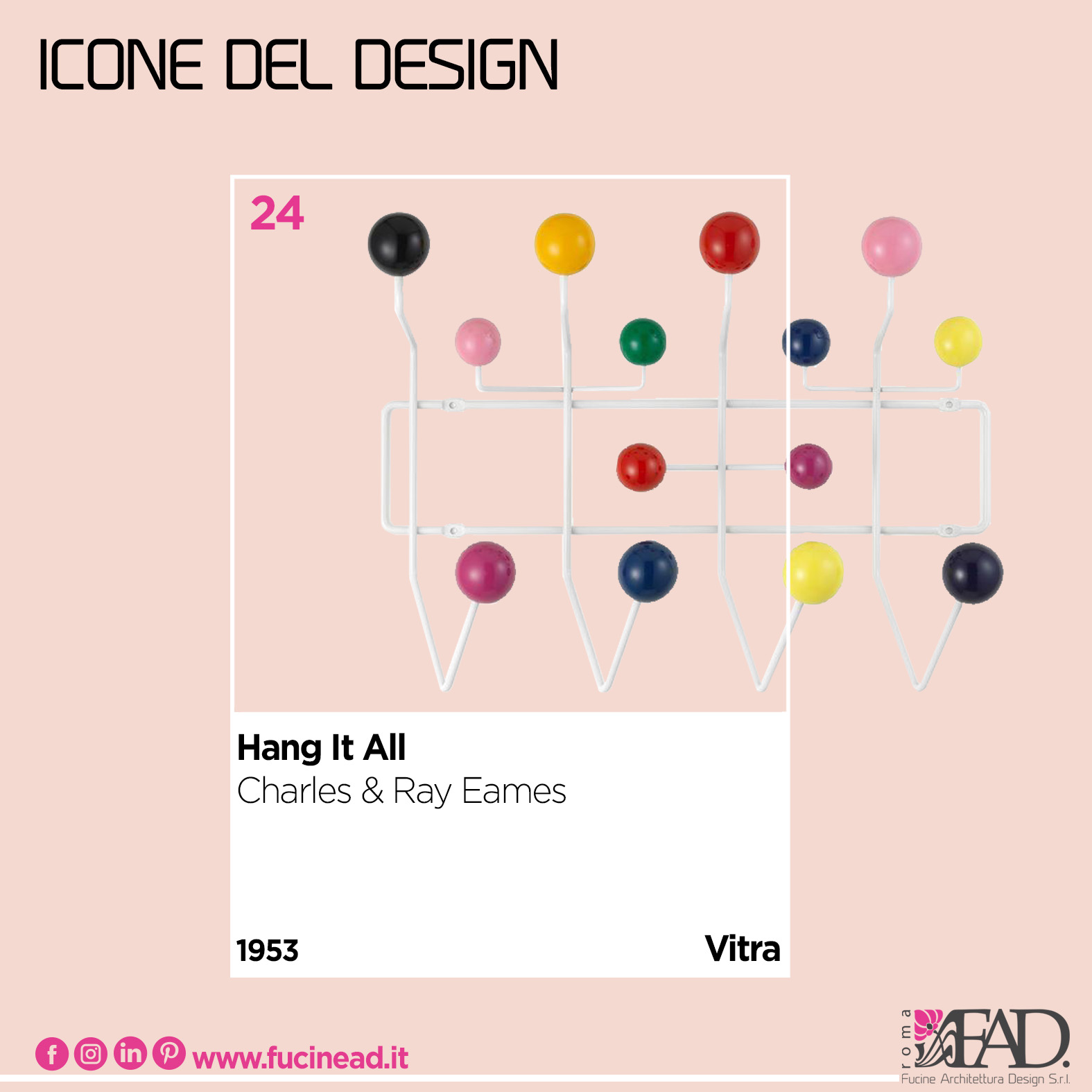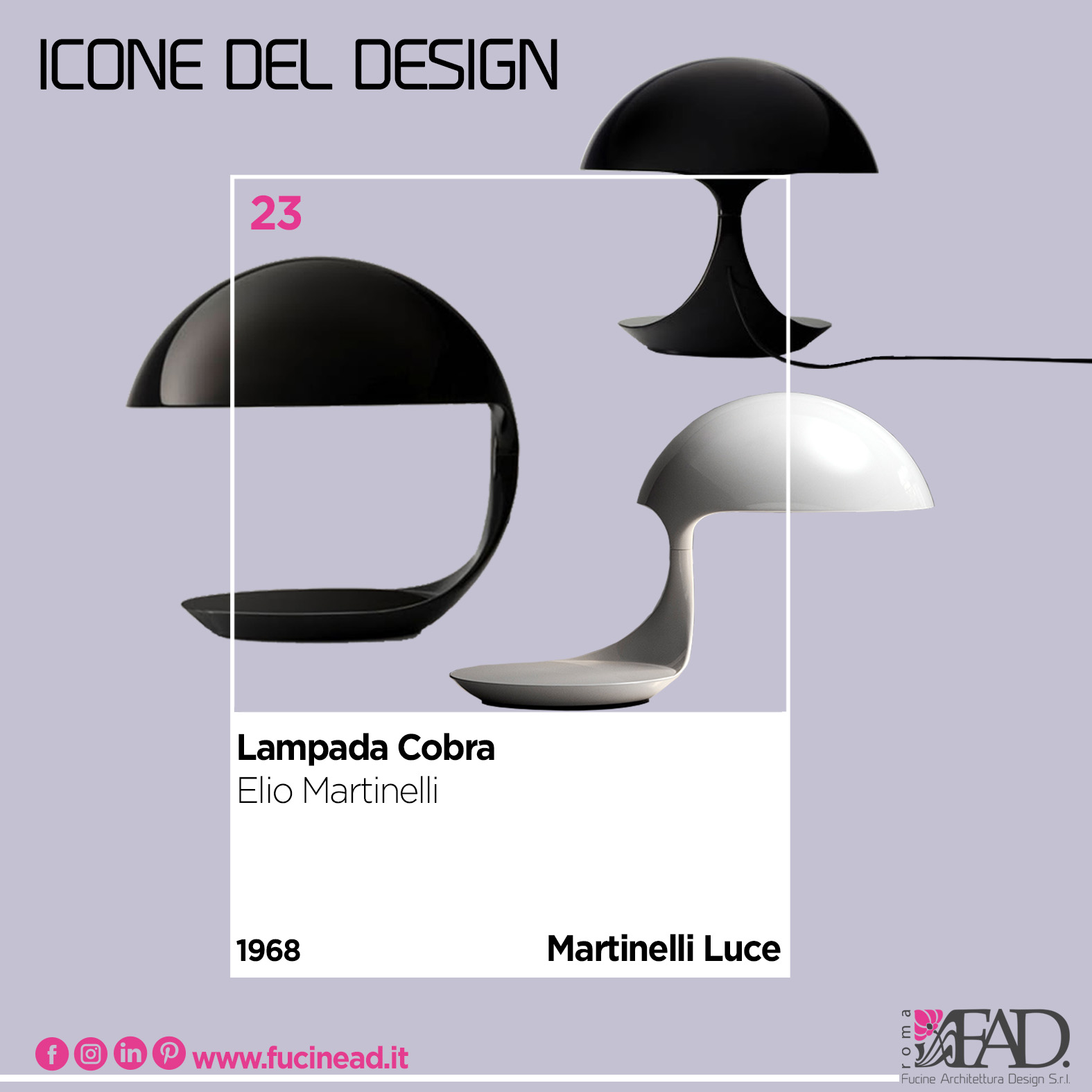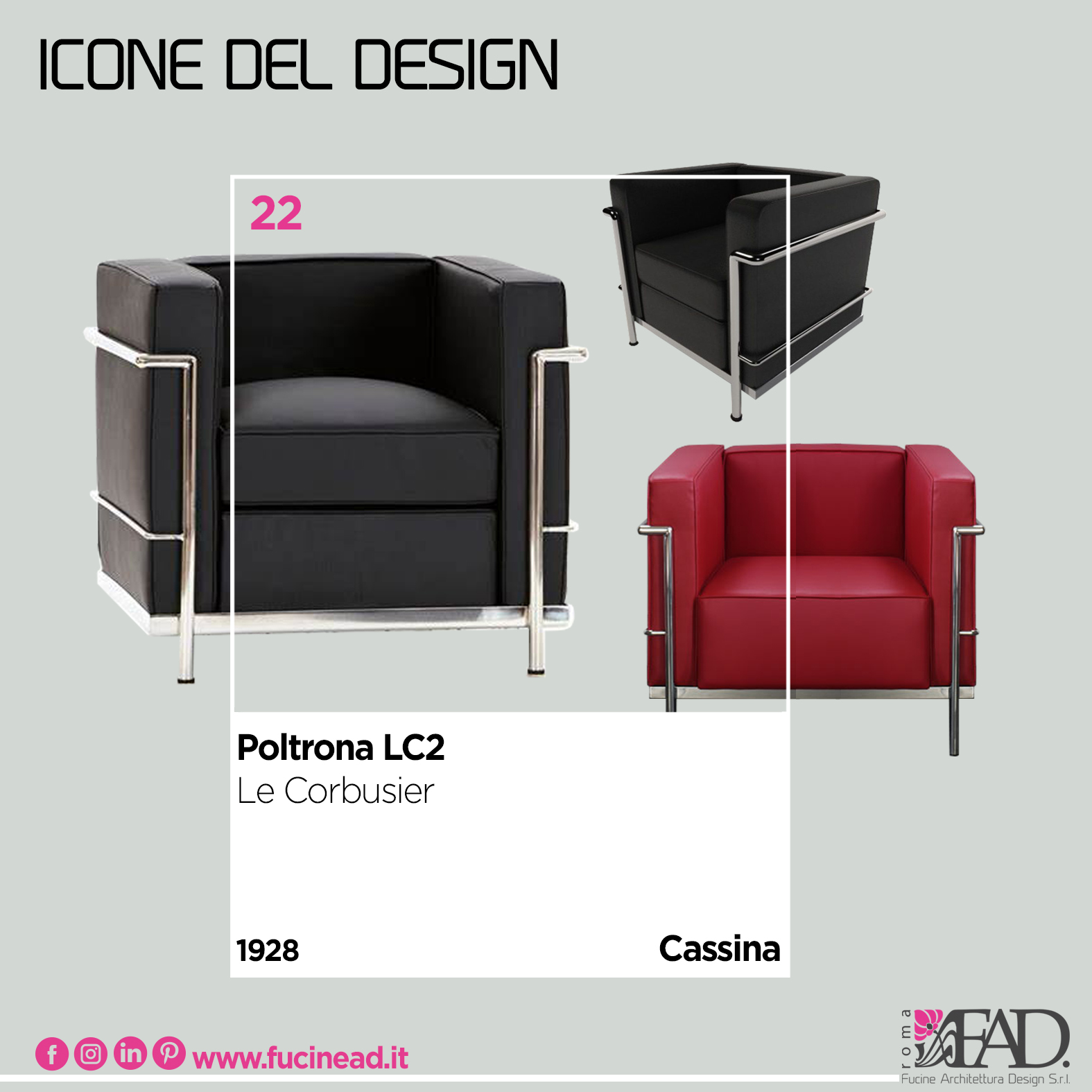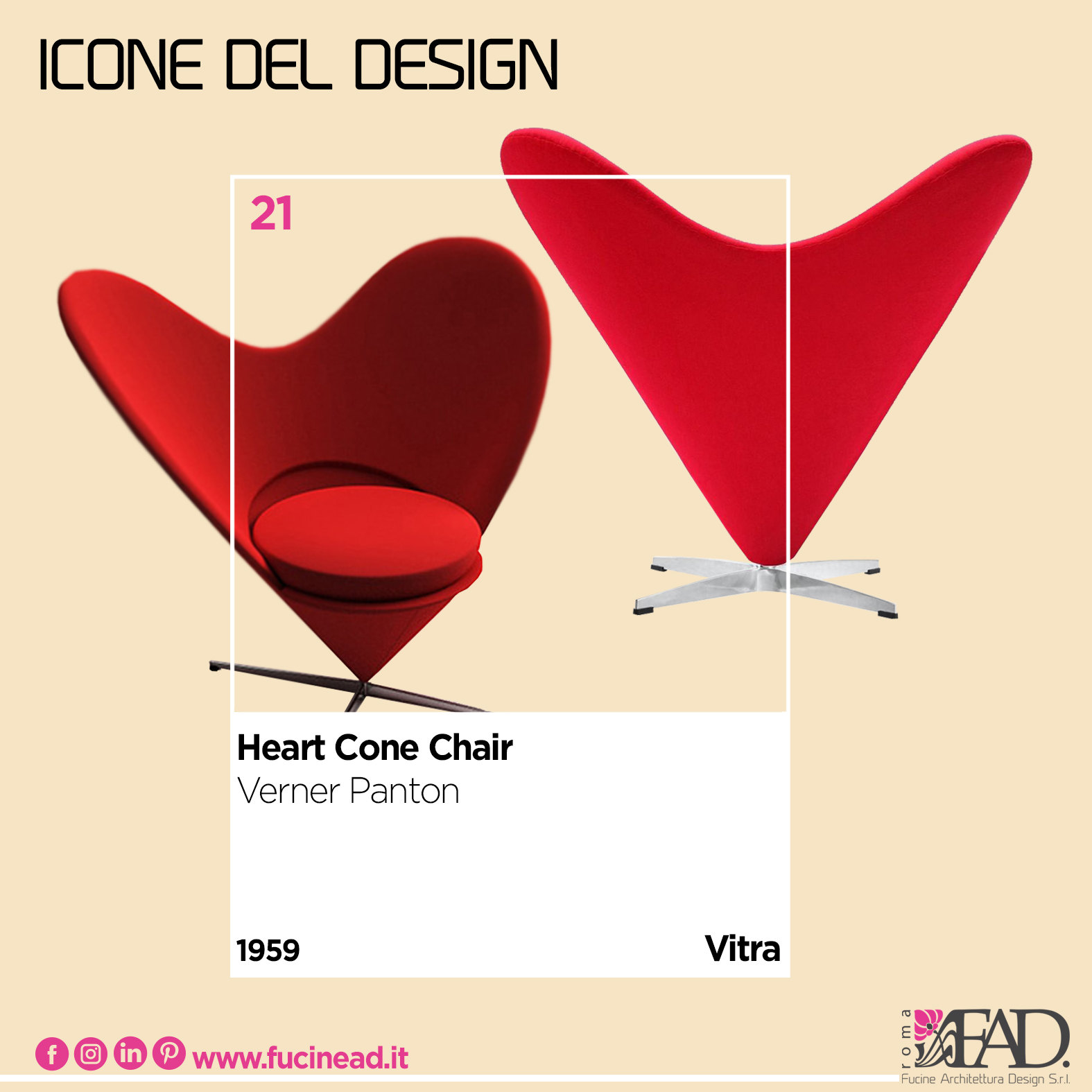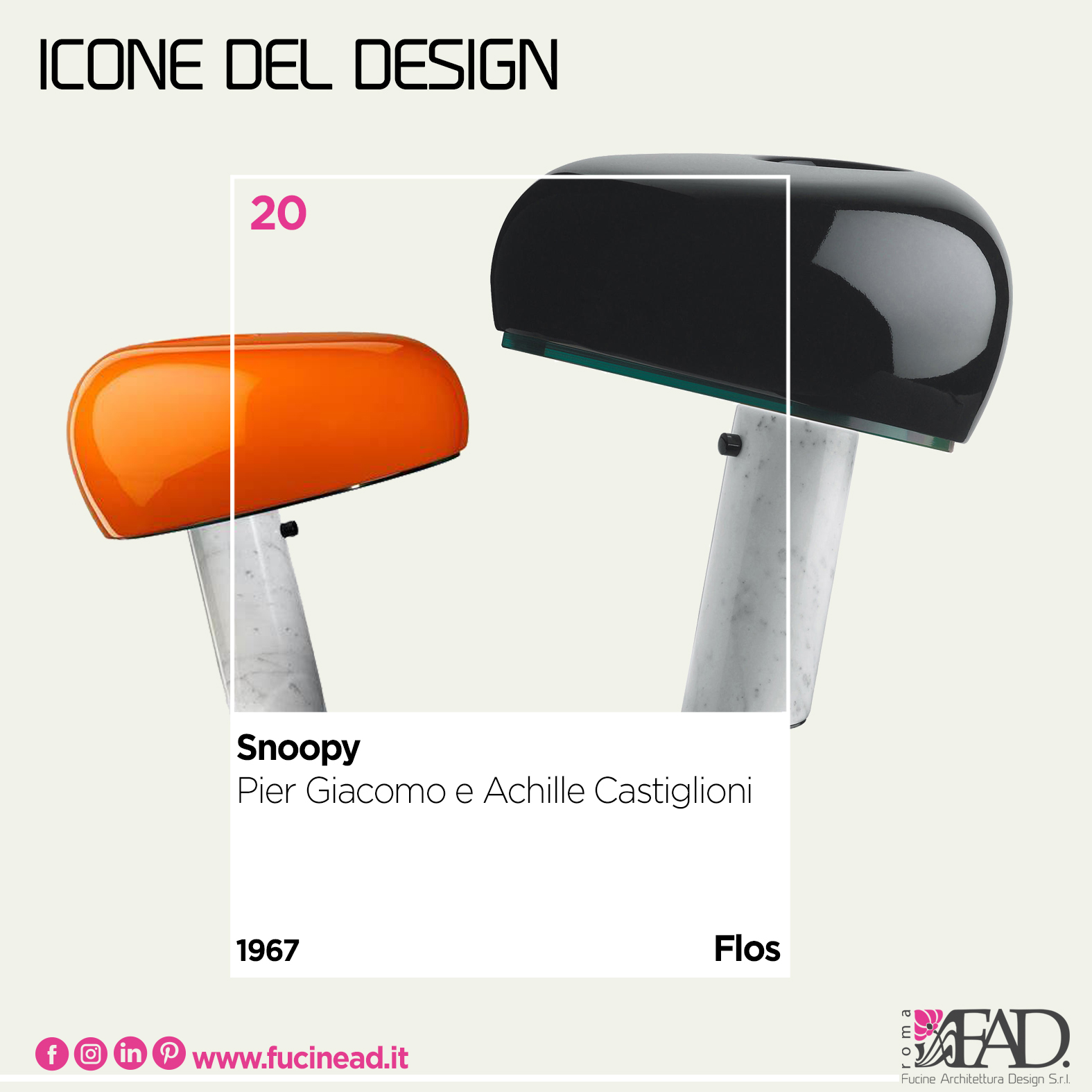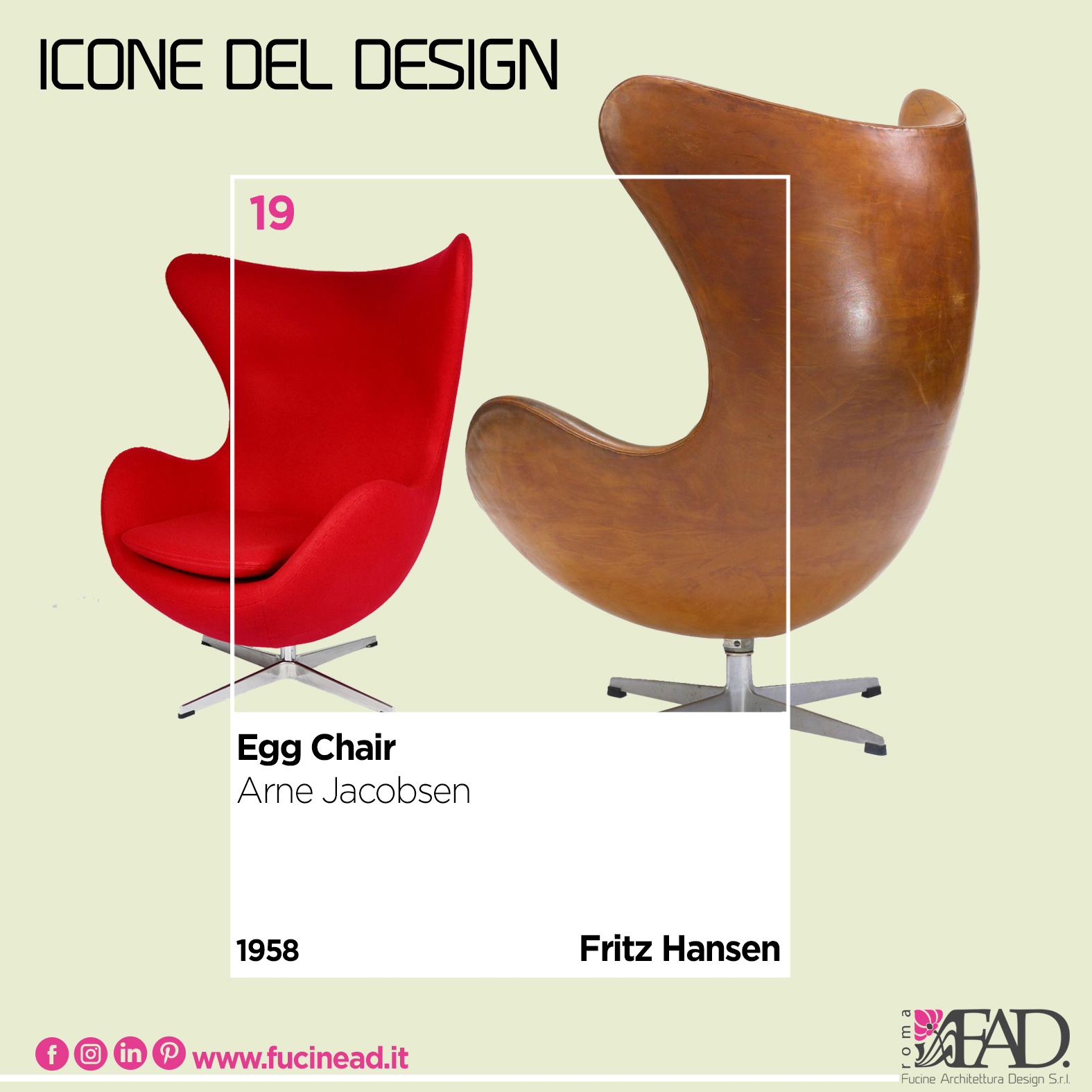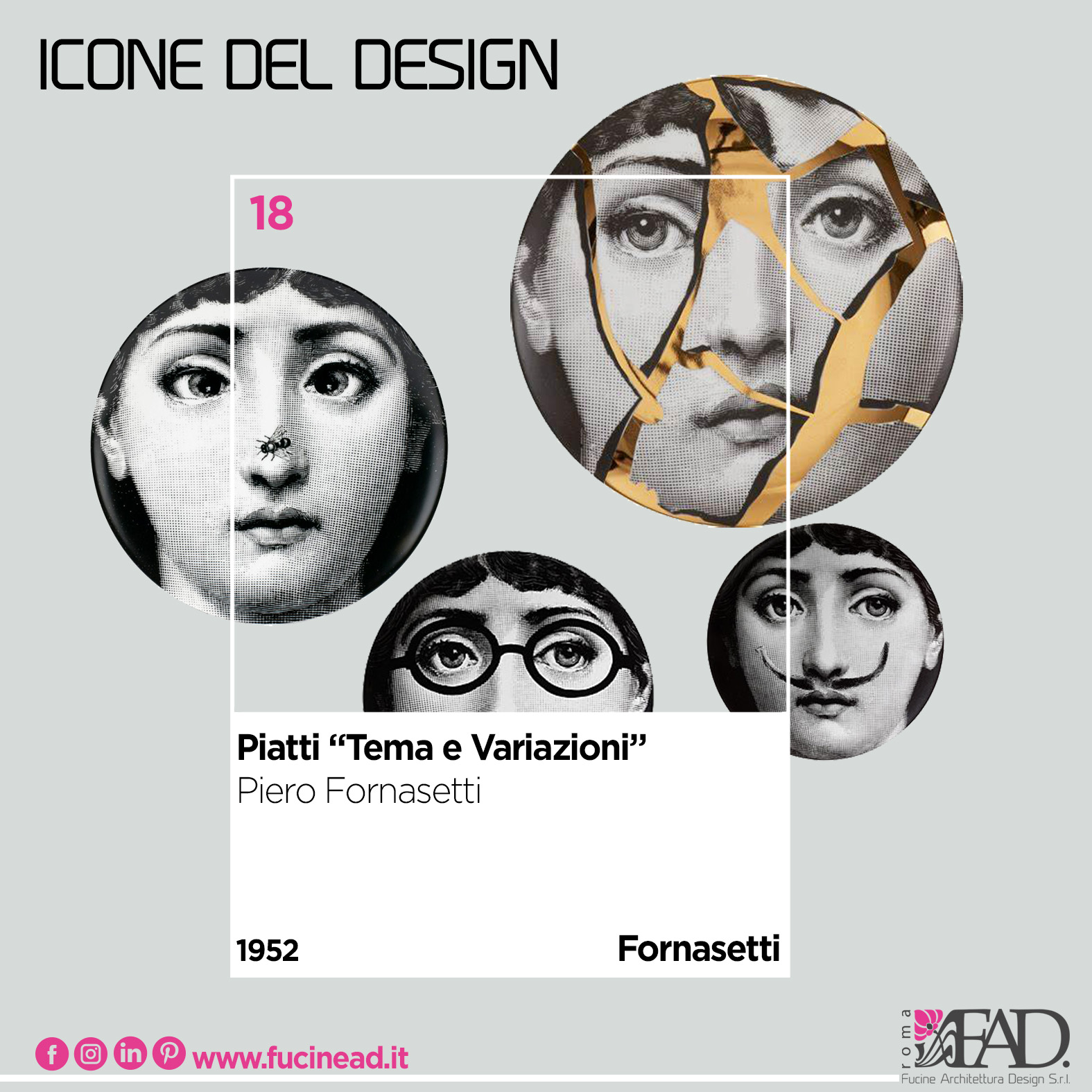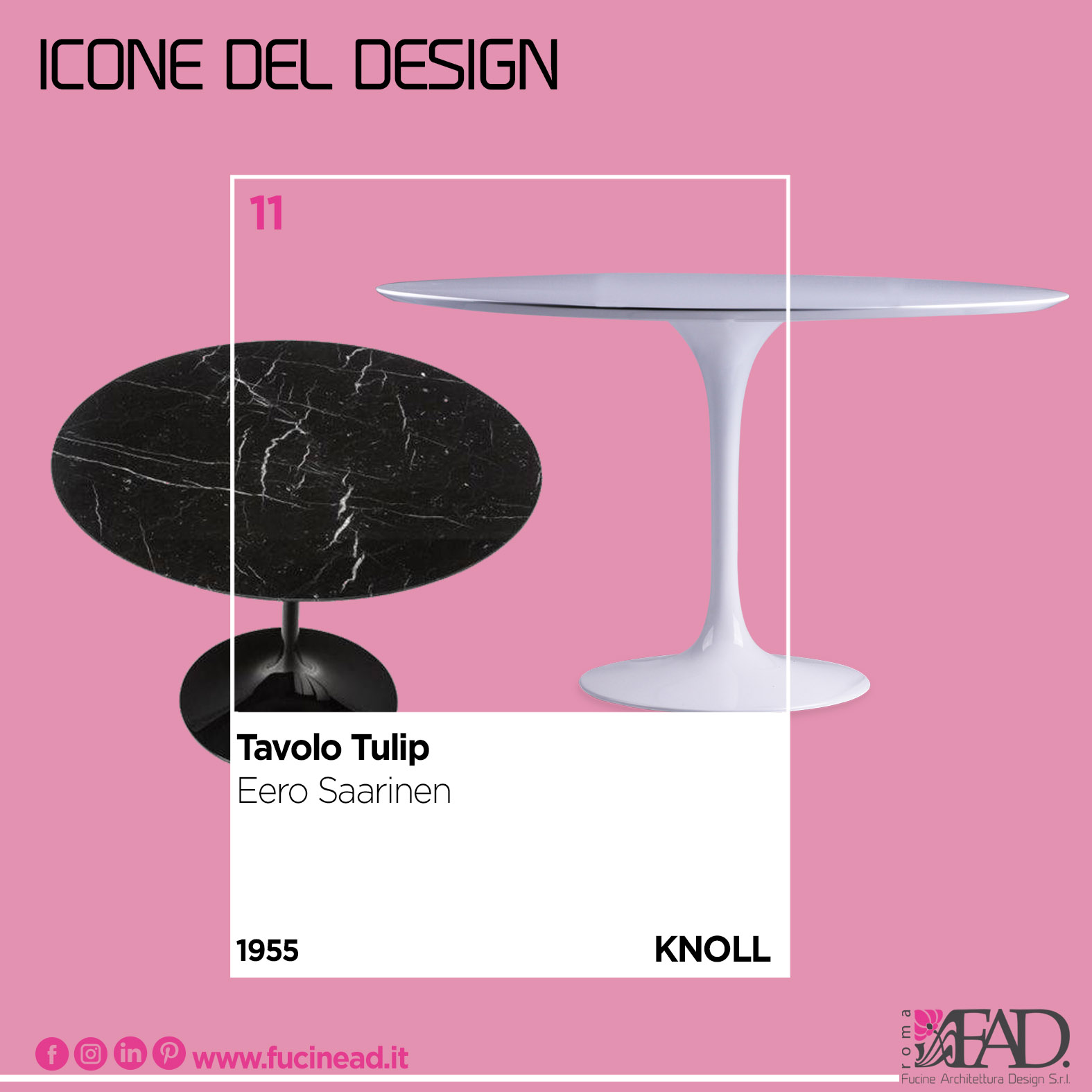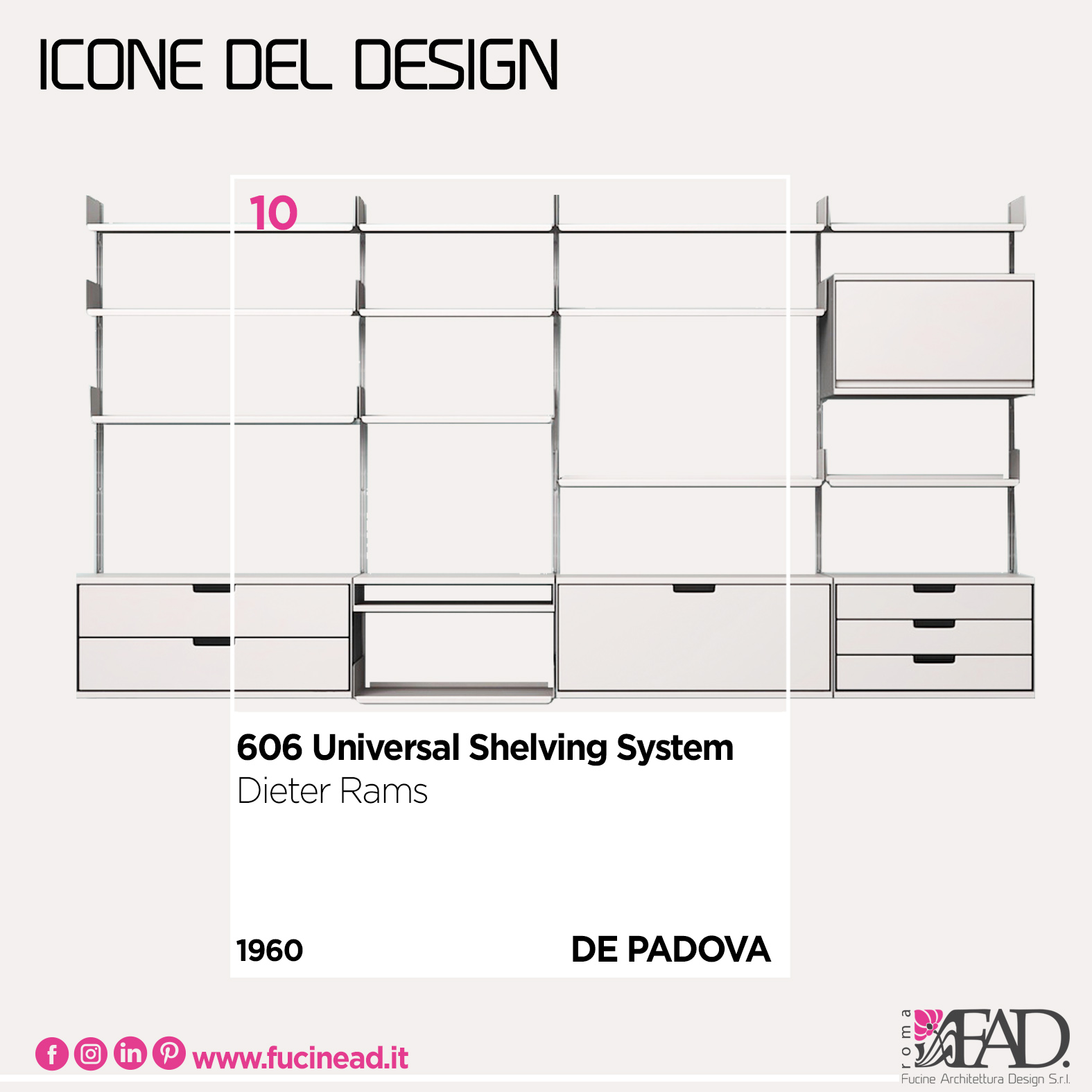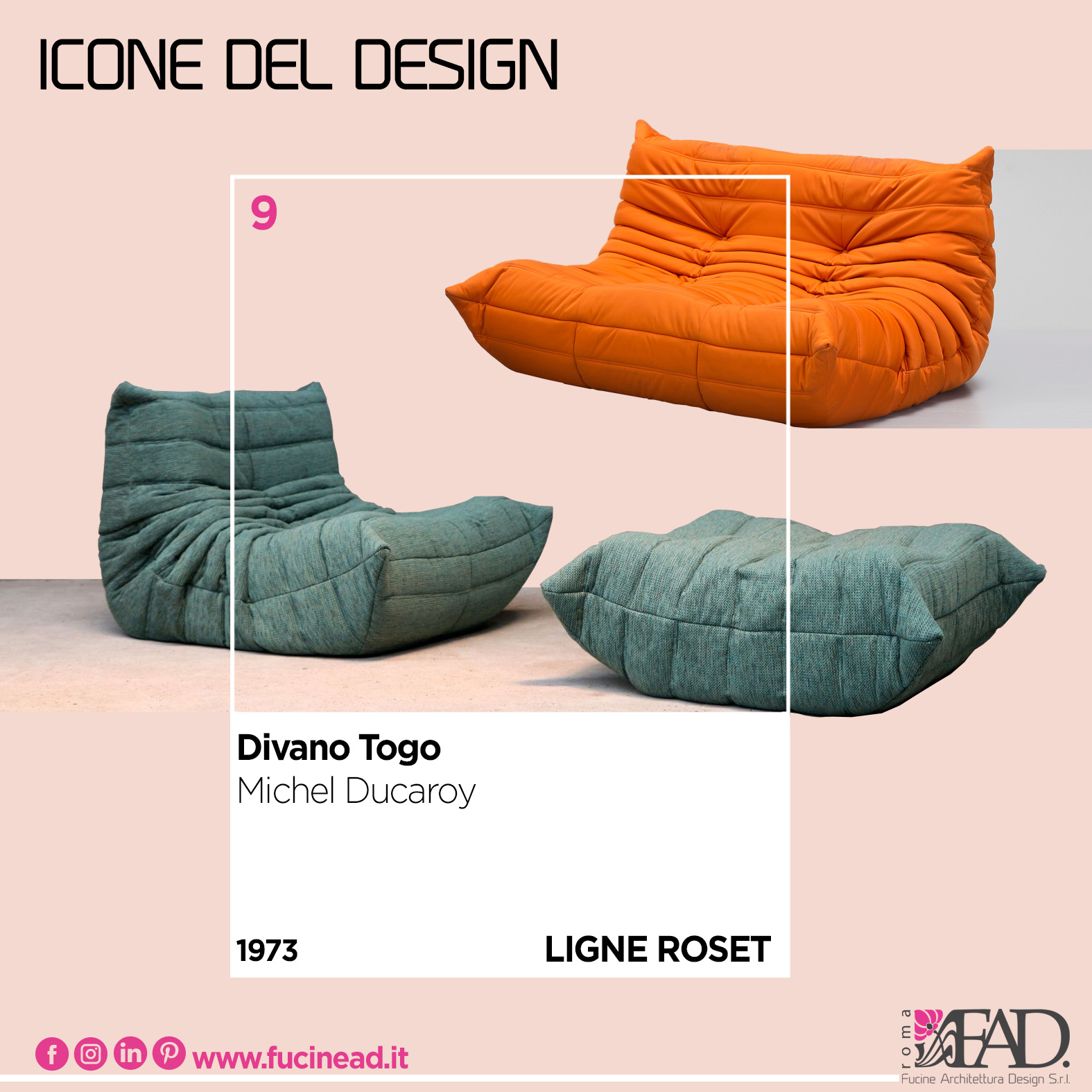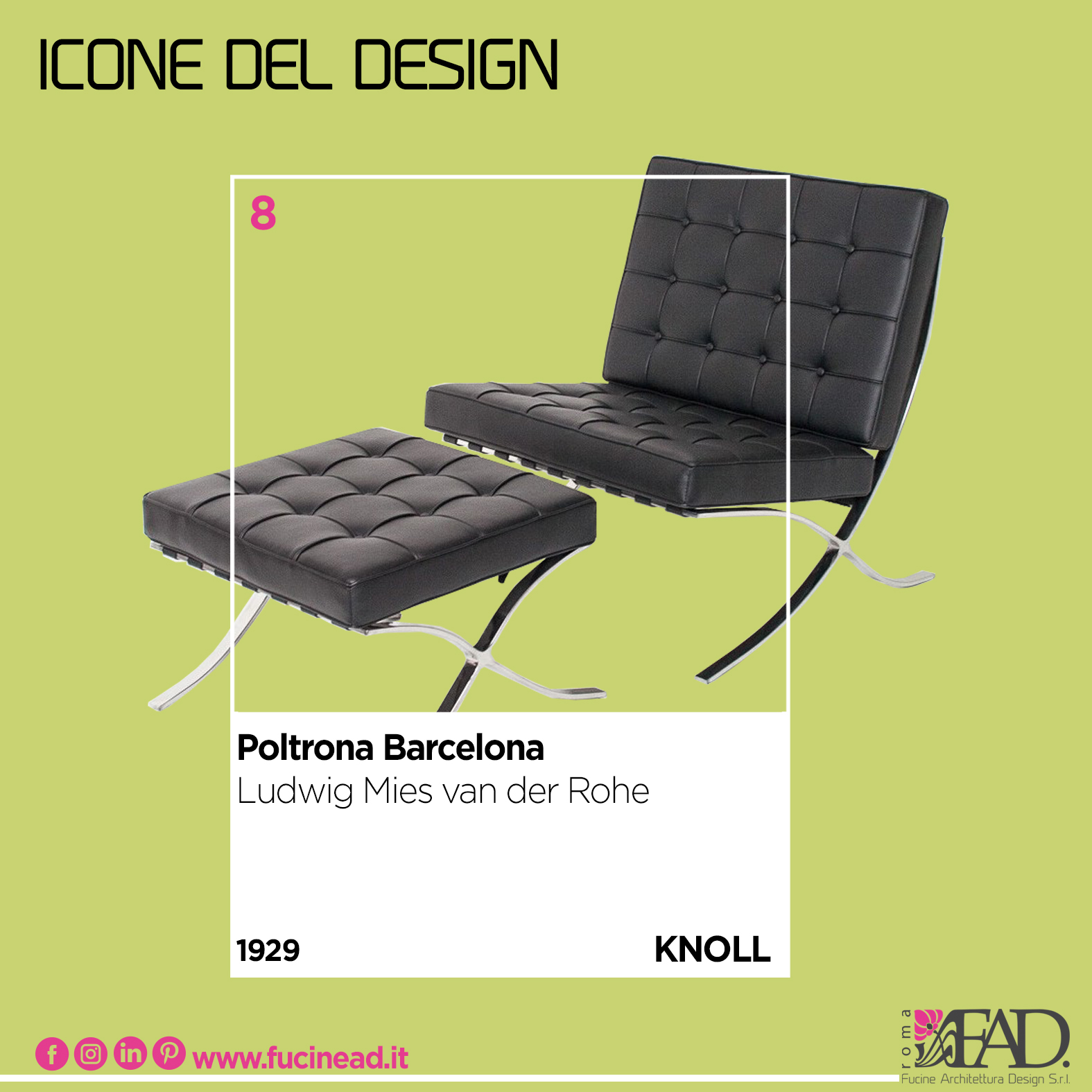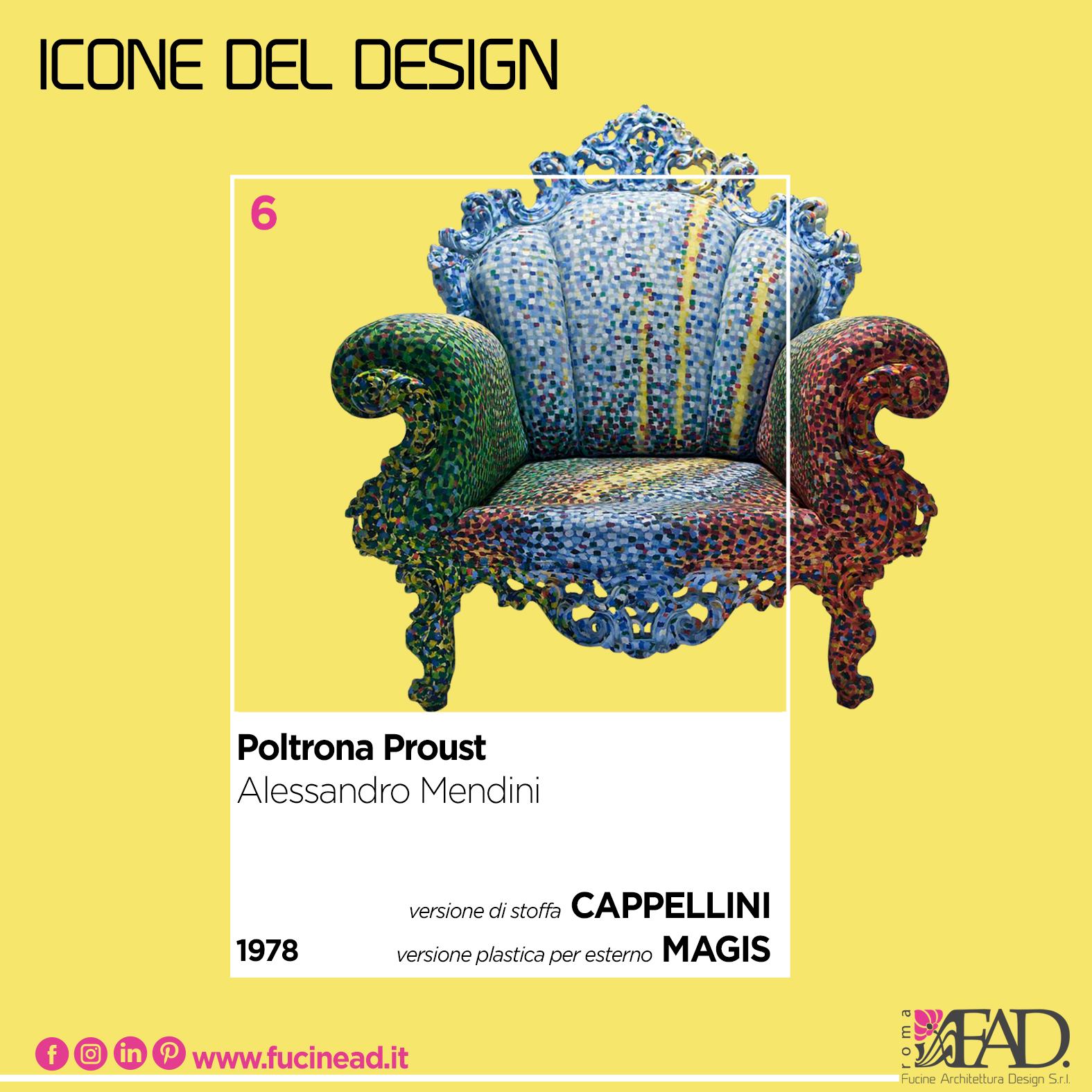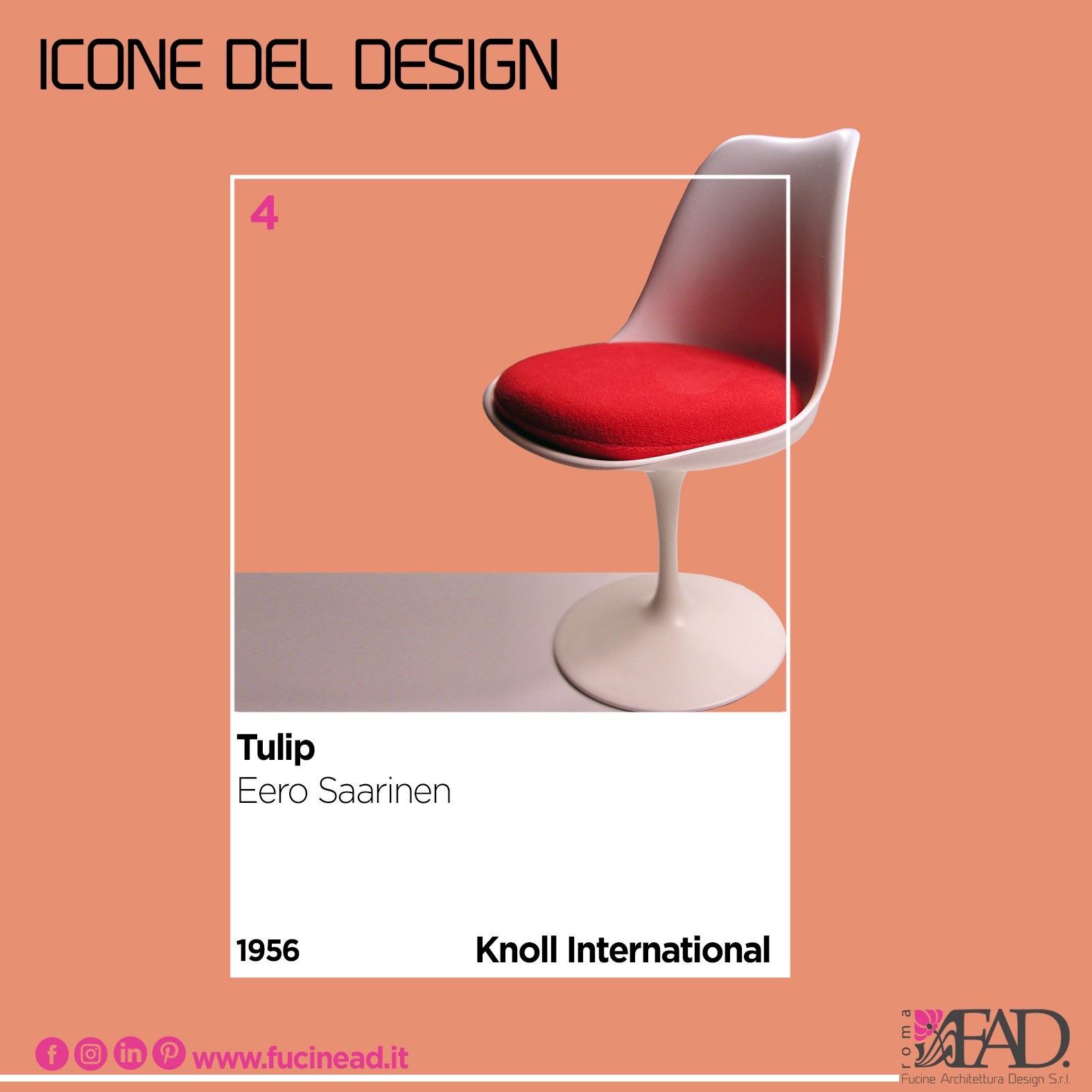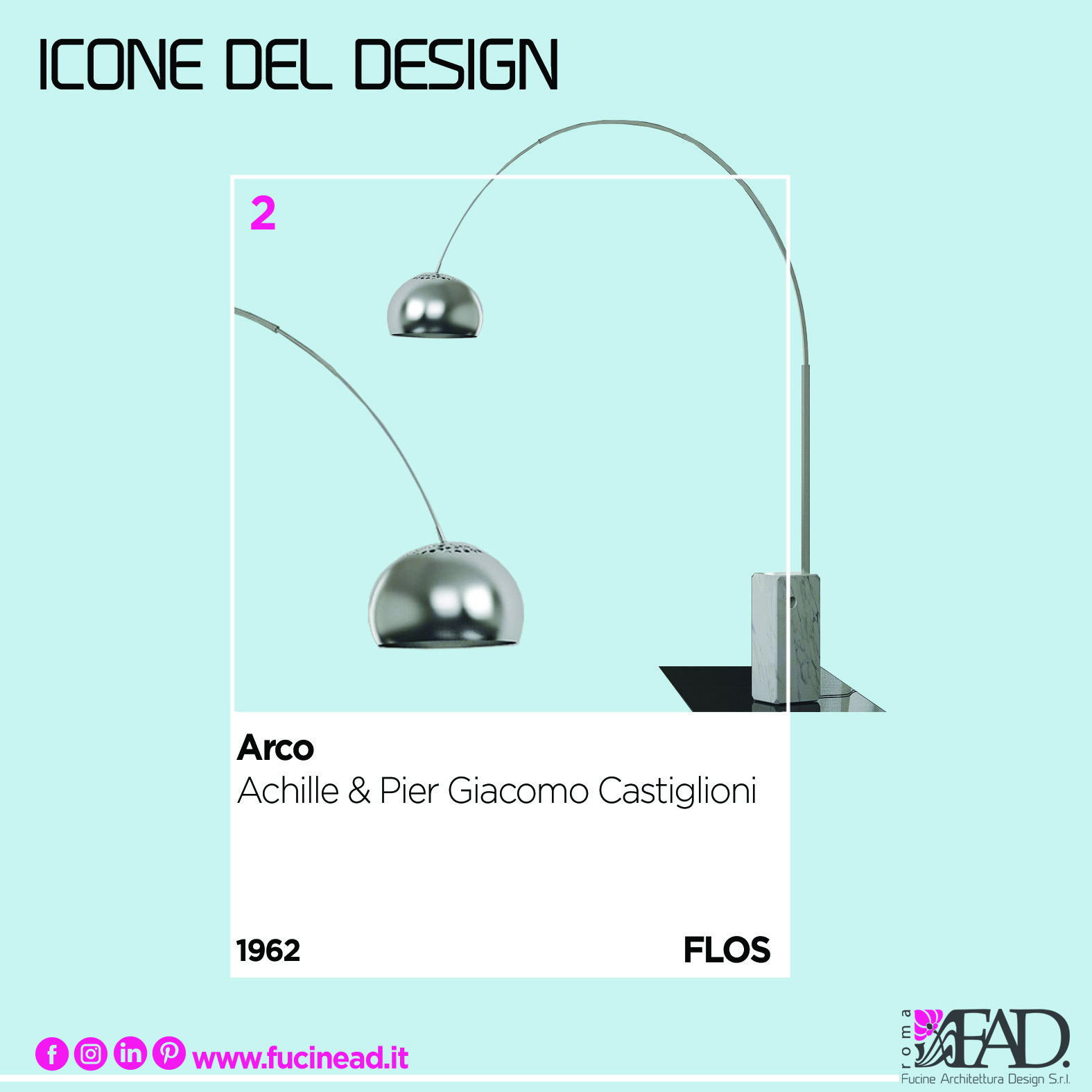Design Icons
The icons of Design have no time
They enter our homes, our offices and all human spaces leaving a sign in the life’s history of each person. Elegance, simplicity, irreverence, colour, minimal ... everything participates in the creation of an object that travels in memory.
Butterfly Chair - 1938
Antonio Bonet, Juhan Kurchan e Jorge Ferrari Hardoy
by Knoll
The Butterfly chair, originally called the BKF chair, represents the story of a success that began back in 1855 and continues to this day. The chair saw the light from the hand of Joseph B. Felby, who designed it in 1855, patenting it in 1877, with the name of Felby Folding Chair, in fact. Its three-dimensional wooden structure, to which the canvas seat is anchored by means of pockets, represents an extraordinary design achievement in terms of lightness and transportability. It is no coincidence that it was used in several British military campaigns. It did not go unnoticed by a group of architects who were pupils of Le Corbusier: their names are Antonio Bonet, Juhan Kurchan and Jorge Ferrari Hardoy, also known as the Austral group, who redesigned it in 1938, in Buenos Aires, Argentina. The reinterpretation they proposed mostly passed through the use of the metal structure, which allowed an even more sinuous conformation than the original, and from a leather seat instead of fabric. The final effect was an extremely practical seat that was at the same time comfortable and elegant. A few years later, in 1940, it appeared in the US magazine Retailing Daily, where it was described as a "newly invented Argentine armchair... for the siesta". It caught the attention of Edgar Kaufmann Jr., then director of the industrial design department at the MOMA in New York, who asked for three examples. One went to MOMA, one went to the (family) house on the waterfall designed by F.L. Wright, a last example probably went to Clifford Pascoe of Artek Pascoe Inc., who began production on a large scale industrial level. After the war, the U.S. production rights were acquired by Hans Knoll, who recognized its commercial potential in 1947 and added it to the Knoll line. The commercial success of the chair led to an increase in unauthorized replications. After losing a lawsuit for design infringement, Knoll ceased production in 1951. Since then, versions of the butterfly chair continue to be produced by many manufacturers in many countries. In 2018, Knoll re-released a tribute to the centennial of the Butterfly Chair.
Cumano Folding Coffee Table - 1978
Achille e Pier Giacomo Castiglioni
by Zanotta
Everyone will have happened to spend moments of leisure or refreshment, sitting around a table, outside a bar or a bistro. In those moments, many of us will have appreciated the beauty of the surrounding space but only a few will have noticed the incredible functionality of the widespread three-legged tables typical of Parisian bistros, and very few have tried to redesign them, starting from their weak points. This is what the Milanese designers Achille and Pier Giacomo Castiglioni did, who were able to give a re-interpretation of the same, which earned them the selection for the "Compasso d'Oro" award in 1981. The first novelty of the Castiglioni folding table lies in the ABS sliding joint, which allows the iron legs to open and close by means of a contactless slide, so as to preserve the finishing paint. A second novelty lies in the support surface: a small circular hole allows you to hang the coffee table on a special wall hook. Lightness, harmony of proportions, stability and ease of storage in a very small space, are the characteristics that have made the Cumano coffee table, distributed by Zanotta, an Icon of Design.
Sampei Lamp - 2011
Enzo Calabrese e Davide Groppi
by Davide Groppi
Slender and elegant at the same time, the Sampei lamp is a floor lamp created by designers Davide Groppi and Enzo Calabrese in 2011. Its name is a reference to the Japanese cartoon of the 80s, which has as its protagonist a fisherman, Sampei precisely. The lamp was the winner of the Compasso D'Oro 2014.
The stem is made of fiberglass, round base and round-shaped LED reflectors in painted metal. An essential and fascinating design.
Its minimalist shape makes it suitable for any environment, indoors and outdoors.
Made in different heights, it rises towards the sky to fold in on itself like a fishing rod. The adjustable reflector allows you to direct the light, creating a diffused and suggestive lighting. The light from above is like a fisherman's line, ready to catch people's eyes.
Zig Zag chair – 1934
Gerrit Rietveld
by Cassina
The Zig Zag chair is an iconic creation of the famous Dutch architect and designer Gerrit Rietveld and is emblematic of the De Stijl artistic and architectural movement of the 20th Century that was all about geometric shapes and primary colours.
Zig Zag is made of natural cherry and can serve as a chair or coffee table. One of the most distinctive features of the chair is its structure composed of a series of panels assembled in the form of a series of horizontal and vertical "zigzags". Each piece is numbered with an engraved signature and comes with certification to verify its authenticity. The seat reinterpreted by Cassina is made of polished natural cherry, natural ash or stained ash in blue, red, yellow, white or black, with border in natural ash. This design makes the chair not only aesthetically striking, but also incredibly sturdy and durable despite its apparent simplicity.
The Zig Zag chair has been designed to be mass-produced, using efficient production techniques and inexpensive materials, such as plywood. This approach to the industrialisation of design has made it accessible to a wider audience than the unique art pieces of the De Stijl movement.
Today this chair is considered an icon of world design and many of its variants are exhibited in major museums around the world. Its combination of geometric shapes, functionality and innovation still makes it a popular choice for lovers of contemporary design today.
Mayday lamp – 2000
Konstantin Grcic
by Flos
Designed by Konstantin Grcic in 2000 for the Italian brand Flos, Mayday is cheerful and versatile and can be used as a table lamp or hung on the ceiling or wall. It has become a cult object in the world of design due to its simple, minimalist style and versatile functionality, making it suitable for a variety of contexts and uses. It was designed with the aim "to be useful whenever you need light".
Made from sustainable recycled materials, the lightweight polypropylene lamp features a transparent conical diffuser and a hook/handle that also acts as a cable winder. With a cable almost five metres in length, Mayday can be easily moved from one place to another at any time. "Today you would eliminate the cable and have a rechargeable battery, but 20 years ago that was unthinkable," Grcic said. As the polypropylene lamp is highly durable and available in various colours, it is perfect for everyday use at home, in the office or in public spaces.
One of the distinctive features is its adjustable diffuser, which allows the user to adjust the intensity and direction of the light according to their needs. This versatility makes it ideal for illuminating specific work areas or creating a warm atmosphere in a domestic environment.
It has won numerous awards and recognitions including the prestigious Compasso d'Oro; and to mark its 20th year on the market, Flos has created a special edition that includes 2,020 numbered pieces and is characterised by unique packaging and an aluminium hook/handle.
SPUN chair – 2010
Thomas Heatherwick
by Magis
The SPUN chair was devised by British designer Thomas Heaterwick. It was presented for the first time in 2010 and is produced by the Magis Company.
Its unique and innovative shape was inspired by the technique of spinning metal, and this is reflected in its distinctive design that appears almost to float in the air. Made of rotational-moulded polyethylene, the SPUN chair is comfortable and contemporary in style, and an icon of modern design.
The sinuous contours and ability to rotate on itself make the chair a versatile addition to any living or public space. The SPUN has quickly become highly desirable among design enthusiasts around the world, thanks to its combination of eye-catching aesthetics and innovative functionality.
The chair is available in various colours and sizes to suit all manner of environments and aesthetic tastes. The polyethylene one-piece structure of the chair makes it weather-resistant and therefore also suitable for outdoor use. Thanks to its ergonomic nature and the ability to rotate on itself, the SPUN invites the sitter to make himself comfortable and have fun playing with movement and position.
Its combination of bold form and innovative functionality has made it an iconic object in many design exhibitions and permanent collections of museums around the world.
I Feltri Armchair – 1986
Gaetano Pesce
by Cassina
The "I Feltri" armchair by Gaetano Pesce was conceived and created in 1986 and produced since 1987 by the Cassina company and stands out for its fusion of artistic form and functionality. Its design was made possible thanks to the use of the then innovative pressed felt. Pesce has adopted an industrial production technique in which felt is printed and shaped to achieve the desired shape.
In order to be made rigid, the felt is soaked in a polyester-based thermosetting resin, this operation is not done in a homogeneous way but in the lower part, i.e. the base, a greater amount of resin has been used to make the felt more rigid and resistant than the upper part more elastic.
The armchair has an enveloping structure that hugs the body, providing a comfortable and welcoming seating experience. The felt used gives the armchair a tactile texture and a feeling of warmth. The padding used for the upholstery, in addition to being welcoming, can be chosen with very bright and eccentric colors. The use of this versatile material not only contributes to the aesthetic appearance of the armchair, but also to its durability and strength.
"Feltri" has become an icon in the world of contemporary design, representing Pesce's ability to challenge conventions and embrace new modes of production. The armchair is not just a piece of furniture, but a manifestation of Pesce's experimental and innovative approach to industrial design.
The PH 5 Lamp – 1958
Poul Henningsen
by Louis Poulsen
The PH 5 lamp is an iconic creation by Danish designer Poul Henningsen. First introduced in 1958, the lamp was designed to provide uniform lighting and to solve the problem of glare. The lamp features a series of overlapping spheres and vibrant colours that optimise the dispersion of light.
Henningsen wanted to improve the colour reproduction of the light source in the PH 5. He therefore inserted small red and blue screens to integrate colour in the part of the spectrum to which the eye is less sensitive. The red and blue areas dim the light in the central yellow-green region where the eye is most sensitive. The aluminium screens, of different sizes and colours, are precisely arranged to achieve the desired effect.
The PH 5 lamp takes its name from its diameter of 50 centimetres and, over the years, has become a classic in the world of lighting and continues to be produced as a design piece of renown. The "Mini" version was launched in 2017 to meet the needs of modern life, and can be used as the main light in a small room or to add a touch of colour in a larger space. In this case, the lampshade was designed to measure 30 cm instead of 50 cm. But whether large or small, the PH 5 never fails to stand out for its combination of eye-catching aesthetics and functionality, aspects which have made it a distinctive feature in many homes and design venues around the world.
The "Veliero" bookcase – 1940
Franco Albini
by Cassina
Who'd have thought that you could have a sailing ship right in your living room?
Designed by Franco Albini, this bookcase is an icon of modernist design and is a testament to Albini's talent in creating furniture as fascinating as it is functional. And what's more, it defies the laws of statics.
The distinctive feature of the bookcase is its shape, evoking that of a sailing ship. Albini used curved wood to create the "sails" of the bookcase, in a manner that is dynamic and elegant, organic and geometric. An ash wood frame supports tempered glass shelves with tie rods in burnished iron. This design choice reflects Albini's interest in Italian craftsmanship and tradition, but with a modernist twist.
The "Veliero" (Sailing boat) bookcase is also a practical solution for storing things, with large surfaces and shelves on which to put books and objects. This combination of aesthetics and functionality is a hallmark of Albini's work.
It is an icon of Italian design exhibited in many internationally renowned design collections. Its timeless allure and innovative design make it an eye-catching centrepiece that continues to inspire architecture and design enthusiasts around the world. Thanks to the Cassina Company, you can now have it at home as it has been included in a limited edition in the "I Maestri" collection.
Pipistrello Lamp - 1965
Gae Aulenti
by Martinelli Luce
How is such an extraordinary beauty born? From the Italian entrepreneurship of the Olivetti Group. The famous typewriter and calculator brand appointed Gae Aulenti to design the new show rooms of Buenos Aires and Paris.
Gae though of a space resembling the typical Italian square - known as the classical meeting point - furnished with street lights that eventually would become the Pipistrello Lamp. However, this brilliant idea found some complexities in the production since the Italian Architect had thought of it as an object to be mass-produced. At that time, Aulenti was collaborating with Poltronova, founded by Sergio Camilli who advised her to have her sketches seen by the Company Martinelli Luce that was moving the first steps in the methacrylate moulding.
The Company - born thanks to the courage of Elio Martinelli - accepted the challenge and succeeded in making the moulds using an opposite machine. Hence, the Pipistrello Lamp became a cornerstone of Olivetti showrooms and obtained a resounding success. The lamp is the same of the original ones produced in the 60s, with the exception of some new finishes on the base and the implementation of LEDs. The lampshade is still made of opaline methacrylate, a plastic material more transparent than glass, with a satin-finished stainless steel stem, regulated with a telescopic movement. Dimensions can vary from 66cm up to 86cm, which make it suitable both as a table lamp and a floor lamp.
In 2015 it was presented in gold with a special version to celebrate its 50’s anniversary.
Today, the Pipistrello Lamp can be seen in major collections around the world: at the Centre Pompidou in Paris, the Metropolitan Museum of Art in New York, and the Museum des Arts Decoratives in Montreal.
Anna G. Corkscrews – 1994
Alessandro Mendini
by Alessi
We've always made use of both human and animal forms in the decor for our kitchen areas. Alessandro Mendini took up this idea by designing the striking Anna G. corkscrew. With its bright colours and contoured form, this icon of POP design makes the perfect addition to the table!
Both the name and the shape are a tribute to the designer Anna Gili, a long-time collaborator with the Mendini studio. In 1994, there was no longer any need for technical research, and no need to change the practical design of Dominick Rosati's classic "winged" corkscrew, patented in 1930. And so Mendini used his special flair to create a timeless icon, a real "design portrait ".
The corkscrew is made of thermoplastic resin and is available in many colourful shapes. Alongside the Anna G. model, there is also a male version of this design, naturally called Alessandro M.
A special red edition has also been produced, to symbolise the fight against HIV. In this version, Anna G. is wearing a red dress, with the (RED) emblem of a white heart embraced by brackets on the front.
The Sacco armchair –1968
Piero Gatti, Cesare Paolini and Franco Teodoro
by Zanotta
In the 1960s and '70s there was great interest in ergonomics, and a desire to take the concept to its extremes by adapting objects to the needs of the body. This led to the creation of many different objects, and one remains a cornerstone of Italian design on the global stage.
The Sacco armchair is still a well-established presence, resisting changes in fashion or season. The hardest part of this project was finding a suitable filling, as they needed a material that would adapt gently and subtly to every movement of the body. Initially, they considered both air and water, but neither of these proved to be suitable, because air was too hard and water was too unstable. Then they hit upon the idea of polystyrene microspheres, which adapted perfectly to the human body. The coverings are in fabric and leather with a zip closure at the base to enable a change of filling.
In 2015 the Sacco range was extended, and now there are three versions: the traditional design, the Medium Sacco and the Small Sacco. These last two were designed for children and teenagers.
In 2019, Zanotta celebrated the 50th anniversary of its chair by producing a limited number in a "green" version, made from sustainable materials. The cover also featured a pattern designed by Pierre Charpin. The nylon thread used to make it came from recycled waste such as fishing nets, and old fabrics and plastics. The microspheres for the filling were produced from a bioplastic derived from sugar cane. This green version is not intended to be an end in itself, but part of a process of research to development with a focus on respect for the environment.
FAB Refrigerator – 1996
Design Smeg
by Smeg
A declaration of love from the 50s, without being 50 years old!
This is the Smeg FAB refrigerator, which has become a style icon thanks to its pastel colors and perfect curves. An icon that represents architects, designers, photographers and all of those jobs that have a strong aesthetic component.
With its name that recalls internationality, Smeg is actually a 100% Italian company. Thanks to the collaboration with architects and designers, the FAB fridge has reached the pinnacle of success all over the world becoming an international icon.
In order to adapt to fashion and to a more essential and Nordic style, in recent years the FAB fridge has been colored with pastel shades that suit very well with minimal apartments and that wink at vintage. Between pink, blue, green and cream, the FAB fridge has also been "dressed" over the years with special editions: with a blackboard surface, with jeans or that pay homage to artists such as Mondrian.
One of the most particular special editions was the one resulting from the collaboration with Dolce & Gabbana: they created 100 pieces, each of them handmade by Italian artists.
In short, the FAB fridge is an icon that immediately became international and that combines art, aesthetics and functionality. It’s that kind of “Made in Italy” that we love so much.
Red & Blue Chair - 1918
Thomas Gerrit Rietveld
by Cassina
The Red and Blue Chair by Gerrit Thomas Rietveld is considered the manifesto of the De-Stijl aesthetic (also known as Neoplasticism). One of the most authentic expressions of this aesthetic is the rigorous structure, clearly visible in this chair consisting of vertical and horizontal lines. The idea is that the elements of the structure are obtained by overlapping the parts, rather than intermingling them.
It was originally beech-coloured and it acquired its current aesthetic six years later, thanks to the suggestion of one of the most influential painters of the time, Piet Mondrian.
Design and art have always interacted, and this chair is like a Mondrian painting, where the primary colours, red, blue and yellow identify the single parts and their specific functions, in contrast with the totally black structure.
More specifically, the structure is composed of 15 black lacquered beech wood slats, the yellow ends of which form a true linear grid (abscissa, ordinate and zenith). The slats house the two plywood planks, the red one of the backrest and the blue one of the seat, all assembled by overlapping.
At sight, it does not appear to be comfortable, but its rigidity is intentional; it is enough comfortable to relax, reading or meditate, but not enough to sleep.
One of Rietveld’s wishes was to have his product manufactured in mass production. This happened only in 1973, after his death, when the Rietveld family sold the production and sales rights to Cassina and the mass production finally began.
Norm 69 Lamp - 1969
Simon Karkov
by Normann Copenhagen
Some design icons had not an immediate success, and the Norm 69 Lamp is an example of that.
In 1969, when it was conceived, the lamp did not get the deserved prominence and remained "hidden in attics" until 2001, when a collaboration was born between Karkov and the then start-up Normann Copenhagen. In that moment, the Norm 69 received the right prestige and became a worldwide success.
Karkov took his inspiration from nature, mainly from petals and stems, to which the Norm 69 is inspired. The result is a lamp that strictly follows the traditional Nordic design but also encompass impressiveness, flexibility, and importance.
It can be assembled without glue and tools, and thanks to the material it is made of, that is fireproof polypropylene, it is able to withstand considerable temperature leaps.
In 2002, he won the Formland Design Award and in 2003 the Norm 69 was voted as Best Product during the International Furniture Fair (IMM) of Colonia.
Today, it is available in more than 60 countries in the world and it is the youngest icon in the history of design.
Eclisse Lamp – 1965
Vico Magistretti
by Artemide
Conceived by the genius of Vico Magistretti, who won the Compasso d'Oro also thanks to this design, the Eclisse lamp was born from an inspiration that struck him in an underground in Milan, after a meeting with the owner of Artemide, engineer Ernesto Gismondi.
During that meeting, someone had told him: "Engineer, you have to design a night light because everyone goes to bed!".
From that sentence Magistretti had a "literary" epiphany and started to think of the lamp used by the thieves in Victor Hugo's book "Les Miserables". It was actually on the basis of that lamp that he designed the Eclipse Lamp, which has become one of the most famous Italian design icons in the world.
Eclisse embodies both essentiality and simplicity. Just a few centimetres high, it is made up of only three overlapped and interlocked aluminium spheres; the first sphere is the base, the second sphere is the lampshade and the third sliding sphere acts as a modulator of light by selecting its gradation. Its perfect form and functioning are reminiscent of an eclipse when the moon slowly darkens the sun.
Despite its versatility, aluminium did however have a disadvantage, that is overheating.
Magistretti was amused by imagining how many people had made love with his lamp nearby or how many of them had burnt their fingers.
However, one thing is definitely true: this imperfection is far less significant than the creative, aesthetic, and functional idea upon which this lamp was conceived.
Juicy Salif – 1988
Philippe Starck
by Alessi
Some products have the full right to enter in the history of the design, as they have enriched our everyday life thanks to their great communicative and figurative power.
The 'Juicy Salif', or more commonly called the 'Starck's Juicer' is surely among the most daring and beloved design icons. Its conception was born during a holiday of the designer Philippe Starck with Alberto Alessi in Tuscany, at the very moment when he was asking for some lemon to season his fried fish and - all of a sudden - this wonderful object came up to his mind and he draw a sketch on a simple paper placemat.
It consists of a single piece of die-cast polished aluminium formed by a drop-shaped central body and three legs radially spaced by 120°. Its form recalling the shape of an alien spaceship, or a funny spider grants it an entry ticket to the Olympus of the contemporary design.
However, the small great innovation of the 'Juicy Salif' (compared to the traditional juicers) is the lack of the container to collect the liquid, which is directly replaced by the glass. Its function and shape make it a true sculpture that everyone would like to have in their own kitchen. Although it has been criticised by many persons for the lack of functionality, this object has been able to imbue itself with an unique and inimitable power of expression.
Timor Perpetual Calendar – 1967
Enzo Mari
by Danese
There are the usual disposable calendars and then there is a calendar that has made history in the world of design. If you own a Timor perpetual calendar by Enzo Mari, you own a design element that will last a lifetime. Its conception came in response to those years of strong Italian consumerism, becoming a "familiar" object to take care of through its daily updating.
It is made of plastic (white, black, or green), with a lightweight and economical material: the days and months are lithographed in black on white PVC slats which can rotate around a central support. It is said that Mari gave the object its shape having been inspired either by railways signals that he loved so much as a child, or by animals, his love of which manifested from the game "16 Animals", produced too, by Danese. In fact, its size, 15x6x9 cm, brings to mind the beak of a pelican (when closed), or the tail feathers of a peacock (when open).
In addition to the object itself, the font has also become a must-have; Helvetica for Mari is a direct and immediate font that the designer loved deeply, and which he used in a great deal of his graphic work, such as posters, agendas, tickets, etc.
Bookworm – 1994
Ron Arad
by Kartell
Whenever we thought of a bookcase, we were used to think of it as a set of horizontal shelves until Ron Arad has arrived on the scene.
After his architectural studies, his mind conceived a new and precise vision for the creation of a bookcase: a new flexible and meandering design, which would have altered the usual bookcase concept so impressed in our minds for ever.
At first the bookcase was almost an experiment with its unusual name of "Bookworm", and completely made of a steel plate. In 1994, Kartell - the pioneer Company in the field of plastic furnishing accessories - showed its interest in this design.
This how the final "Bookworm" was born, made of a flexible extruded thermoplastic material offering a wide range of colours to customers, without compromising the strength, stability and functionality usually associated to steel.
The biggest innovation was however its use. In fact, each person can arrange it according to their wish, the available space, and their own possibilities... it is like creating a sculpture from scratch. The "Bookworm" is undoubtedly a design icon and can be found almost everywhere, homes, offices, shops, and locations around the world.
Poltrona Lady - 1949
Marco Zanuso
by Cassina
Is this the first foam rubber and polyurethane foam armchair in history? Yes, it is! It is the Poltrona Lady.
The Poltrona Lady was conceived by Marco Zanuso in 1949 for the then Arflex company, a brand created by Pirelli to design new seating systems in upholstered foam. Thanks to its easier reproduction technique, it was an immediate success.
A design icon with an immediate effect on the market, thanks to its cheerful style given by the contrast between a voluminous body and the slender legs that highlights its entire sinuous shape. As stated above, the industrial production process has been fundamental for its success because it allowed the creation of new prototypes with fresh appreciable patterns and outlines, with previously unthinkable industrial standards. The armchair is made up of four foam rubber elements which are subsequently assembled on the frame.
Today, the Cassina Company has inherited this marvel of design and enriched it by producing an exclusive series of fabrics designed by Raf Simons.
Lettera 22 - 1950
Marcello Nizzoli & Giuseppe Beccio
by Olivetti
Olivetti's Lettera 22 is well known for being the first portable typewriter, accessible to everyone.
Marketed in 1950, it immediately became a cult object since it entered in the everyday life of teachers, employees, and artists. Thanks to its clear-cut and linear design, it created the perfect combination of aesthetic beauty and functionality.
The operating mechanism consisted of pressure levers with a QZERTY layout. The key of its success was the compact and pratical dimensions, 32.4 cm wide 29.8cm deep and only 8.3cm high, for a total of 4kg.
Its name has accompanied famous names of literature and journalism, such as Ernest Hemingway, Oriana Fallaci, Enzo Biagi, and Pier Paolo Pasolini, and it won the First Place in the competion among the 100 best design products made in the last 100 years in 1959. It is also exhibited in some of the most famous museums in the world, including the MOMA in New York.
Ultrafragola - 1970
Ettore Sottsass
by Poltronova
Who can resist to the charm of Ultrafragola?
Created by the genius mind of Ettore Sottsass for the Poltronova Brand, the Ultrafragola mirror / lamp fills every space with beauty, thanks to its pink light and its two meters high shape.
The soft, rounded, and sinuous shapes correspond to the frame of the mirror. When it is turned off, the frame is grey but, as soon as it is turned on it becomes a portal towards a fantastic world, thanks to its particular colour. The frame is made of a thermo-perforated opal plastic material with a built-in neon light.
Sottsass's idea was to find the inspiration in one of the most famous fairy tales in the world, Alice in Wonderland by L. Carrol, and to honour all women in general......why?
Because the dreamlike shape of this mirror / lamp seems a real portal towards a world to be discovered, in which the mirror and the lamp blend to create this piece of iconic design. Furthermore, its soft and concise shape is a tribute to the delicate vanity of all women.
Componibili- 1967
Anna Castelli Ferrieri
by Kartell
At present, the playful Kartell's Componibili are still among the Company's Best Sellers, worldwide famous and even part of the permanent collection of the Modern Museum of Art in New York and the Pompidou Centre in Paris.
The Componibili were designed by Anna Castelli Ferrieri, one of the first Italian women to graduate in Architecture; the modular elements reflect both a minimal and cheerful aesthetic and the modernity that was gaining ground in those years.
The modular elements are the expression of the tastes of the 60s, characterised by the economic boom and great, creative, and innovative ideas.
The design field, as well as the industrial sector, were inspired by the economic development and the "mass production" became a reference also for the aesthetic. In those years, plastic is the new state of art material, and it will be used to realise the Componibili. Flexibility, modularity, and lightness are the key words which emphasize the creative strength of these modular elements.
Thanks to their various colours, the great practicality, and the ability to perfectly adapt to every room at home, the Componibili achieved a great success immediately.
Hang It All – 1953
Charles & Ray Eames
by Vitra
At first, after its conception, this item was not highly appreciated, but it has become a success over the years. At present, it is one of the most copied and reproduced design objects in history.
In 1953, the Eames couple decided to design and manufacture this coat rack to teach children how to hang clothes in a playful and funny way. At the beginning, the spheres were made of beech wood and of different colours; over the years, their colours has undergone many variations to be adapted to the habits of each time.
Anyway, the most famous Hang It All is still the one made of coloured spheres reminiscent of "lollipops", placed as terminals of a set of metal tracks made of iron and steel which intersect each other with soft lines. The spheres were initially handcrafted using a lathe while now, they are produced through a numerical control process, thanks to the new technologies.
The distance between the spheres is always constant, thus allowing to place and adapt it to different rooms. The Eames couple have often used the combination of wood and metal in their designs, and this is why the Hang It All is one of their most iconic products.
Cobra Lamp – 1968
Elio Martinelli
by Martinelli Luce
A captivating and futuristic design evoking a cobra ready to attack...this is the soul of this iconic lamp designed by Elio Martinelli, and now produced by the Martinelli Luce Company in Lucca.
The Cobra Lamp combines dynamic and elegant lines with creativity and technical professionalism thanks to the use of polymers, a material that has always sparked interest in Italy. This great interest has led Giulio Natta to be awarded with the Nobel Prize in 1963 for his studies on plastic materials.
Why is this Lamp called Cobra?
Because of the great peculiarity of this lamp: its transformism. Its initial shape can be inscribed inside a simple sphere, but it can be changed with a single touch all of a sudden. Through the rotation of its upper part the lamp becomes "S" shaped recalling a leap of a cobra ready to attack.
It can be used both as light point in an environment and as functional element on a desk, in either forms, spherical or transformed.
The fusion of creativity, inspiration, technique, and geometry has created one of the most fascinating design icons in the history of Italian design.
LC2 - 1928
Le Corbusier
by Cassina
The unique LC2 armchair, designed by Le Corbusier, can be certainly included in the panorama of iconic and eternal pieces of design.
Le Corbusier designed it by meticulously studying the positions of the human body in all forms, basically sketching a seating model able to universally embrace such positions, in which aesthetics and functionality harmoniously blend.
The LC2 model was first designed in 1928 along with Pierre Jeanneret and Charlotte Perriande and manufactured by the Company Thonet for the first time; later on, the second edition was launched by the Gallery Owner Heidi Weber of Zurigo in 1959. In 1964, the Italian Company Cassina acquired the rights of the LC1, LC2, LC3 and LC4 models.
In 2010, the LC collection was expanded with other wooden models designed by Le Corbusier only, without the intervention of the colleagues above.
Its structure is made up of high quality flat and tubular pieces of steel masterfully welded together that supports the whole structure; the coating is made of a protective chrome plating (introduced in 1950). The structure is finished by (leather or fabric) cushions whose separation fully expresses the logic of rationalism. A concentrate of elegance, quality, and creativity.
Heart Cone Chair – 1959
Verner Panton
by Vitra
Over the course of his working life, Verner Panton produced many design icons, among which the famous curved chair "S" made of plastic. However, that was not the most striking piece of design he created. Verner always tried to blend the geometric shapes with the Scandinavian modernism, and the union of these two styles allowed to create an inimitable icon design, the Heart Cone Chair.
At first, the chair was designed for a Danish restaurant and its name simply was "Cone Chair", due to the geometric shape to which the chair was inspired. Later, as a result of a change to the original design, the chair was embellished with a heart-shaped silhouette which led to its new name: Heart Cone Chair.
The large protruding wings of the chair delicately hug you, giving an ergonomic and comfortable feeling. The swivel base, made of stainless steel, houses the semi-circular padded shell that extends upwards to form the seatback and to create this unmistakable dynamic and elegant shape. The fabric is available in many chromatic variations, although red still remains the main colour to further accentuate the delicate and unique heart-shape of this chair.
Snoopy - 1967
Pier Giacomo and Achille Castiglioni
by Flos
The first word you can think of while watching a Snoopy Lamp is maybe "ironic".
Its lines deliberately recall the homonymous dog famous since the 1950s for the comics, and its shape is not an end in itself. When the Snoopy Lamp was conceived, became one of the most innovative lamps of the time as it introduced completely new lighting concepts, in which the technology was one of the main aspects.
The lamp is balanced by sober-looking materials, such as the Carrara marble of the base and the painted metal reflector. The technological innovation of that time was precisely in the marble base which houses both the switch and the transistor for the adjustment of the light intensity, controlled through a small rotary knob with a minimum dimension. Nowadays that system has been obviously replaced by a touch dimmer sensor.
The metal reflector stands on the marble base and creates an asymmetry determined by the inclination of the base that is oblique in relation to the top. The base has been the subject of a careful study to perfectly distribute its parts and grant the maximum possible stability.
To celebrate the 50th anniversary of Snoopy, one of the most iconic lamps in history, Flos has created a limited edition consisting of 1700 pieces. A special edition that brings back to light the original project, now kept at the Achille Castiglioni Foundation.
Egg Chair – 1958
Arne Jacobsen
by Fritz Hansen
Designed for the Radisson Sas Hotel in Copenhagen, Arne had conceived it by reinterpreting the classic Bergère armchair in a modern key; a new idea of seating: a delicate and enveloping armchair, like a nest egg, from which the armchair's name derives. It was specifically designed for a hotel lobby as it offers you a relaxing, more informal, and comfortable corner, sheltered from the tactless eyes of hotel users thanks to the presence of the "ears" on the backrest.
A seat that acquires the features of a sculpture, where the egg represents the metaphor of life, in which religion and philosophy are in contrast. A backrest shell which welcomes and shelters you, a soft, welcoming, and protective upholstery, a delicate line inviting to relaxation.
Its fiberglass and polyurethane foam structure allows to recline the backrest and to cover it with a variety of leather and fabrics, so that the armchair can be positioned in any environment, from the most classic to the most eclectic. By means of his pencil, Jacobsen has eliminated edges and rigid shapes and has followed a path dominated by soft and sinuous curves, thus creating a well-being armchair, whose success is still timeless today.
Theme and Variations Plate – 1952
Piero Fornasetti
by Fornasetti
When we mention the name of Fornasetti, we immediately think of something magic,
in which the fantastic and the surreal blend to create that kind of craftsmanship that finds its greatest support in art.
Piero Fornasetti has created a recognizable style, unique in the world, where decoration is the key to create functional and bold design icons; his tradition is now followed by his son Barnaba Fornasetti who manages the Company.
The turning point for Fornasetti arrived in the 1950s; after the establishment of his Atelier in 1952, he discovered the face of Lina Cavalieri in a magazine. Lina was a well-known 19th century opera singer. Fornasetti was so fascinated and enchanted by her beauty that conceived an entire series entitled "Theme and Variations" in her honour; the singer's face was depicted in over 350 different versions on everyday objects, but - above all - on plates made of porcelain.
Whether the image is characterised by glasses, flying insects, entrapped behind bars, the face of Lina Cavalieri is always recognizable thus becoming an important collection object.
Fornasetti was thus able to create small artworks thanks to a single face transfiguring it through art and metaphysical games, visions and details thanks to his design....so the Made in Italy became even more unique and bewitching.
CH07 Shell Chair - 1963
Hans J. Wegner
by Carl Hansen & Søn
The view of a 3-leg chair might surprise you, but the beauty and functionality of the CH07 Chair created by the Danish designer Hans Wegner in 1963 makes people smile, exactly like the shape of the chair.
A light chair with soft lines in which elegance and organic shapes intertwine, thus making its style famous and everlasting, a real icon of design.
It is also called "smiling chair" or "shell chair", and despite its three legs it is absolutely stable, thanks to the great skills of Wegner in architecture and cabinet making. In the past, Wegner said: "a chair must be beautiful from all sides and angles", and this is undoubtedly visible in the design of this great iconic object.
The materials used for its construction are of the highest quality: the back and the seat are made of laminated wood in pressed shapes, while the front legs - with soft and light lines - are made from a single piece of laminated wood. The seat and the back are upholstered with fabric or leather, sometimes even characterised by chromatic plays.
When it was conceived, its shape and particularity was not appreciated and its production was interrupted in the seventies; in 1998, when the times were ripe, the production of the chair restarted and won numerous design awards.
Its beauty is still produced in its original version by Carl Hansen & Søn in Denmark.
Taccia Lamp - 1962
Achille and Pier Giacomo Castiglioni
by Flos
If the Taccia Lamp is not regarded as the design icon par excellence, what another object could ever be considered as such?
The Taccia Lamp was born from the brilliant idea of the Castiglioni brothers, in 1962. Although its neoclassical design with support reminds a Greek column, it was actually inspired by the design of stove pipes, for their characteristic of heat dispersion.
As the brothers admitted, the lamp was initially imagined in a wrong way. At that time, driven by the enthusiasm for new synthetic materials they decided to use transparent plastic to produce it, but the heat of incandescent bulbs deformed this material, that became like a flat sheet. Hence the idea of changing the material and to use the glass.
The inimitable Taccia was then born. The base is made of "naturally" anodized extruded aluminium or black painted, outlined by protrusions to improve the heat diffusion of the bulb; the upper part of the lamp consists of a swivelling deep glass diffuser, on which a concave, white enamelled, aluminium disc is placed. The bulb is hidden inside the metal base thus resulting in a mild, non-blinding light thanks to the clearness of the glass of the bell.
Beyond the initial difficulties, the story has a happy ending: in fact, as Castiglioni said: "The Taccia Lamp is the Mercedes of lamps, a symbol of success”.
And success has arrived and continues over time.
The Nemo Armchair - 2010
Fabio Novembre
by Driade
Since its creation in 2010, the Nemo Armchair has become a worldwide recognised design icon. Its designer, Fabio Novembre, often attributes his works to the Greek culture, theatre, and statuary art.
This eclectic, enigmatic and in some ways disquieting armchair is not a simple seat, but a sculpture-armchair which combines and blends design, functionality, and contemporary art, almost with a theatrical feature. Everyone's attention and curiosity is captured by its impressive size, regardless of its position, in enclosed spaces of different types or in a garden.
The backrest recalls the features of a human face with classic features, an inexpressive mask with empty eyes, devoid of memory and expression, a face out of time. Its high and cosy backrest creates an embracing place to hide yourself. The polyethylene seat can be assembled on both a swivel and a fixed base and the colours range from white to red, from black to grey.
In 2020, to celebrate the tenth anniversary of its creation, the installation NEMO OMNI was presented during the event Milano Design City. To promote equality and inclusiveness, the armchair was proposed in five different Skin Tone colours; as the face also represents the beauty, it cannot be represented by a single colour.
A design icon capable to blend art, culture, community, expressions, and global messages of inclusiveness.
Panton Chair - 1967
Verner Panton
by Vitra
The Panton chair was designed by Verner Panton with the idea of creating an object that perfectly adhered to the body lines. It was conceived between 1959-1960 but put into production by Vitra only in 1967.
The stylish iconic Panton chair was made out in one single piece, and due to its as unusual as surprising shape it easily became one of the cult objects of the twentieth century. In 1971, it even became the cause of scandal for a piece of a British magazine, when Amanda Lear showed her body leaned against the chair in a sensual way.
Several years have gone by from the design to the production, as at that time it was exceedingly difficult, if not almost impossible, to realise its cantilevered shape by defying the gravity laws. Thanks to the innovative material it was made of (polyester combined with fibreglass and polyurethane) and the availability of various types of colours, the Panton chair immediately became an amazing item, perfect for any furnishing context.
There was, however, another problem to overcome, its high production cost; in fact, towards the end of the 70s the production of the Panton was stopped. It took ten years more to have it back on the market, thanks to a new material, the polyurethane foam which has a cheaper cost; since then, it has become a real pop icon.
In 2017, to celebrate the half century from its conception, two limited editions were produced: the Panton Chrome and the Panton Glow. Thanks to a metallisation process, the Panton Chrome acquires a mirror finish, while the Glow is realised through a tricky process where five layers of paint, containing phosphorescent pigments, are laid; the layers, absorbing the sunlight, give out a wonderful light blue glow in the dark.
Bourgie Table Lamp – 2004
Ferruccio Laviani
by Kartell
The Bourgie Table Lamp is a timeless best seller that has entered in the Olympus of design thanks to its creator Ferruccio Laviani, who designed it for Kartell. Thanks to its ideational concept, this lamp brings different generations together.
Its name says it all!
The inspiration struck him while he was listening to the song "Bourgie, bourgie" by the Gladys Knight & The Pips, that teased the bourgeoisie in the 1970s; this is why he decided to design an object that undermined the idea of classic and formal in an ironic way.
So, he decided to choose the style of a seventeenth-century object as an example, and to turn it upside-down by using an innovative material, the polycarbonate which transformed the classic object into a pop icon. Its transparency and the contrast between shape and support give a contemporary look to the lamp, without affecting its traditional shape. The lamp is now produced in different colours, making it suitable for any environment.
Its two-dimensional base is characterised by curved and winding shapes, reminiscent of the Baroque style, which convey in the lampshade made with a pleated effect. Its attachment system allows to transform the lamp according to the occasions, thus becoming an office, desk, or a bedside lamp, even a floor one.
A timeless spectacular icon of cult design.
Carlton bookcase / room divider - 1981
Memphis Milano
by Knoll
So, the members of the Group created a hundred furniture and other objects, with bright colours and the oddest shapes, taking their inspiration from the art deco, the pop art, and consequently from the mass culture of those years.
The Memphis Group thus became the spokesperson for a new idea of contemporary furniture, where the object acquires emotional and symbolic aspects.
The greatest design icon that arose from this vortex of ideas was the Carlton bookcase, Sottsass' masterpiece that perfectly reflected the characteristics described above. Given its sizes, this bookcase is also used as dividing wall and has an "anthropomorphic" shape in the collective imagination; in fact, it recalls the image of a man with raised arms and open legs, obviously characterised by bold and bright colours.
Despite its vaguely unstable shape (that is the perception that Sottsass wanted to transmit), the bookcase is very solid as it is made of assembled laminate panels and sliding drawers, resting on a thick, black, and white base.
Its geometric shape, eclecticism and uniqueness are so strong that this design icon is not seen as an element to be coordinated with the surrounding, but as a real monument that becomes the centre of everything.
Tulip Table - 1955
Eero Saarinen
by Knoll
Its unique and innovative design is reminiscent of a tulip stem. Saarinen distances himself from the collective imagination of tables adorned with four legs, giving life to an object characterised by a single central leg that opens like a stem to support the corolla, that is the top of the table. The famous Tulip chairs will become part of the collection as well, always realised according to the same criteria.
Saarinen conceived this table to avoid the annoying "slum of legs" created by chairs, tables, and humans: this confusion represented to him an "ugly, confusing and unrestful world". The project, however, was the result of a great experimentation, born from the desire to design innovative and ingenious home furnishings for Knoll.
In addition to the shape, also the materials used were very innovative. At that time, plastic was not yet strong enough to support the weight of the top; therefore, he initially used the aluminium fibre to realise the base, and the fibreglass shaped as a shell, covered in black, white, or platinum. The top is still available today both round and oval, laminated, veneered, or made of marble.
Today, the patents for Saarinen's works are expired; so, how is it possible to recognise the originals? Thanks to the plate at the base bearing the Knoll Logo and Designer's signature, exactly to certify its authenticity.
606 Universal Shelving System – 1960
Dieter Rams
by De Padova
It was born in the 60s and re-edited by Maddalena De Padova in 1984; the 606 has maintained its high success ever since, thanks to its essential style and the multiple functionality of its convenient modular system.
Simple and geometric shapes create a shelving system adaptable to any environment thanks to its versatility: by using ceiling or floor mounted uprights it can become a double-sided bookcase, thus having a dividing function between different spaces, or it can be used in a more classic way by anchoring it on the wall, and playing with its various modular compositions.
Shelves are made of very thin aluminium sheets, folded at the ends to facilitate the coupling or the support. The material and its fine processing give it a minimal character, that can be embellished with drawers or a writing desk. In addition, the bookcase is available in three different aluminium finishes: satin anodised, matt black anodised or white painted.
As initially mentioned, Maddalena De Padova obtained the rights from Rams to produce a totally aluminium version of the bookcase in 1984, and this version is still among the most important and recognizable creations of the De Padova Company.
Togo Sofa - 1973
Michel Ducaroy
by Ligne Roset
A sofa without armrests which, thanks to the 5-density polyurethane material, acquires – in its complexity - a strong flexibility and an inimitable comfort. The fabric or leather cover of the seat is completely removable and characterised by a pleating process which, thanks to the polyester padding content, gives a pleasant and embracing softness.
This sensation is amplified by the shapes that can be given to the sofa; for this reason, it is often playfully associated to caterpillars or toothpaste tubes. The mix of materials and folds create an embracing and compact mass that is light, despite its size.
The Togo sofa was presented for the first time at the Salon des Arts ménagers at the Palais de la Défense in Paris, in 1973; it became so popular that Ducaroy and Ligne Roset had to immediately produce further additional pieces, including casual armchairs or the famous corner element, suitable to create sofas with extravagant dimensions and shapes.
Ducaroy also developed other ideas, including a sofa bed with a flexible mattress structure which, despite its particularity, had not the same success as the original.
The Togo Sofa is still a contemporaneity emblem; a timeless icon dreamt up to spend lazy moments in the greatest comfort, embraced by the softness.
Barcelona Chair - 1929
Ludwig Mies van der Rohe
by Knoll
Mies' idea sprang up from the wish to revisit in an industrial key the “sella curulis”, the Etruscan upholstered chair used in ancient Rome, reserved to magistrates and Roman aristocracy. His idea was to accommodate the Royalty of Spain to the best, during the Exposition. Mies said that he conceived this chair "for the rest of the King".
The Barcelona Chair was initially designed according to the technologies of the time, using therefore a metal part made of bolted pieces with elegant and delicate curved feet; the frame was then replaced by stainless steel in 1950. To recall the ancient Rome, he initially thought to use wild boar skin for the upholstery, then replaced by bovine leather divided into 40 hand-sewn squares, whose corners are quilted with buttons.
The smoothness and slenderness of the structure, together with the hefty handcrafted upholstery give an elegant, important, and impressive effect to the Barcelona Chair.
The production of the Barcelona Chair has never been interrupted, even during the Second World War. Mies sold the marketing and production rights to his friend Florence Knoll (Knoll brand) in 1953, during his period at the Illinois Institute of Technology (always designed by Mies).
Lampada Atollo - 1977
Vico Magistretti
by Oluce
Designed by the architect, town planner and designer Vico Magistretti, this lamp has completely revolutionised the classic idea of table lamp, thanks to the use of three distinct shapes: a cylinder, a cone, and a hemisphere - three neat geometric solids.
The play on subtractions rather than on additions resulted in an essential and geometric design, whose well balanced shapes give it a unique and refined decorative style. The lamp was commissioned by the company "Oluce", and was initially designed in two material variations: one in lacquered aluminium and one in opaline glass; both suitable for a welcoming and delicate light diffusion. There are currently six lamp models: three for the metal type and as many for the glass type.
A versatile lamp, adaptable to all environments: from living rooms to bedrooms, from studios to entrances.
Poltrona Proust - 1978
Alessandro Mendini
fabric version by Cappellini
plastic version for outdoors by Magis
The idea was born during a voyage in Veneto, when Mendini came across an eighteenth-century style armchair which gave him the artistic illumination, and in 1978, the first example was created.
As well as the reference to its history, the greatest feature of this armchair is the use of polychrome dots, which invade the entire armchair from the fabrics to the wooden structure, thus giving it a sensation of fluffiness. The production was limited to few pieces, all rigorously created by artisan hands and controlled by Mendini, in all their curves and shapes
Currently, Mendini's granddaughter is in charge of painting by hand the individual armchairs while "Cappellini" is in charge for large retailers production since 1993. They have produced it by implementing a change to the upholstery fabrics only without changing the wooden structure. "Magis" has instead created an outdoor version in plastic material.
Since then, the history of this armchair has been studded with so many successes that it entered in the MoMA collection.
Coffee Table - 1944
Isamu Noguchi
by Vitra
We must ask this question to fully understand the value of the Coffee Table. Besides being an architect and designer, Noguchi was - above all - a sculptor.
Coffee Table was born as a real sculpture in which the table, structured in rosewood and glass, uses the bio morphism to create function and art. The table was created as a "sculpture for use" and "design for production", usable both in work and residential environments.
In addition to the use of quality materials, its main feature is the structure. The solid walnut base consists of two identical inverted parts, positioned on a single rotation bar: this ensures the stability of the glass base positioned above, and gives a touch of fluidity and elegance, at the same time.
Tulip - 1956
Eero Saarinen
by Knoll International
It is no coincidence that Saarinen created this seat inspired by soft and delicate forms, instead of the austere and geometric German style of the time.
In addition to its shape, its main peculiar characteristic is the continuity between the swivel base and the seat; the swivel base is made out of reinforced aluminium while the seat is made out of pressed fiberglass. Since their colours are similar, it seems that the seat consists of just one element.
The seat is characterised by a removable filled cushion in various colours, with removable lining.
This chair has become one of the greatest icons of the world design, and has been awarded both by the Museum of Modern Art in New York and with the Federal Award for Industrial Design.
UP Series - 1969
Gaetano Pesce
by B&B Italia
In detail, it is characterised by a two large breasts located in the upper part of the backrest, while the lower part recalls the thighs; the effect is that when you sit down, you feel embraced and protected, as when you were a child sitting on your mother’s lap.
The armchair was born both as a praise to the woman (visible in its forms), and as a criticism of the hard life that women suffer in many parts of the world (represented by the spherical pouffe, the ball at her feet).
The armchairs are made of polyurethane material and covered in stretch fabric. This has allowed that they were vacuum packed since 1973, thus reducing the packaging size by about 90%.
Arco - 1962
Achille e Pier Giacomo Castiglioni
by Flos
The appropriate word is "essentiality", like the major works by Castiglioni.
The lamp consists of a vertical parallelepiped base in Carrara marble (65 kg), with a strategic hole that easily allows the movement of the entire lamp, by inserting a cylindrical element (like a broomstick).
The arch is mounted in the rear part of the marble and consists of four extruded steel elements. The bulb is positioned to a height of 2 MT to allow a relaxing broad-spectrum illumination. The light point is positioned inside a dome shaped shade, consisting of two pieces: a perforated spherical cap, which prevents the lamp holder from overheating, and an aluminium ring which is used to adjust the position and height of the shade, according to the arc adjustment .
Lounge Chair &Ottoman - 1956
Charles & Ray Eames
by Vitra
A swivel aluminium base contains a veneered multilayer shell, made up of cushions covered in real leather. A comfortable seat that also emphasises its function thanks to the presence of the Ottoman, which gives it relaxation and comfort.
The expressive power of the Lounge Chair & Ottoman is so powerful that it has been permanently exhibited at the MOMA, the Museum of Modern Art in New York.



